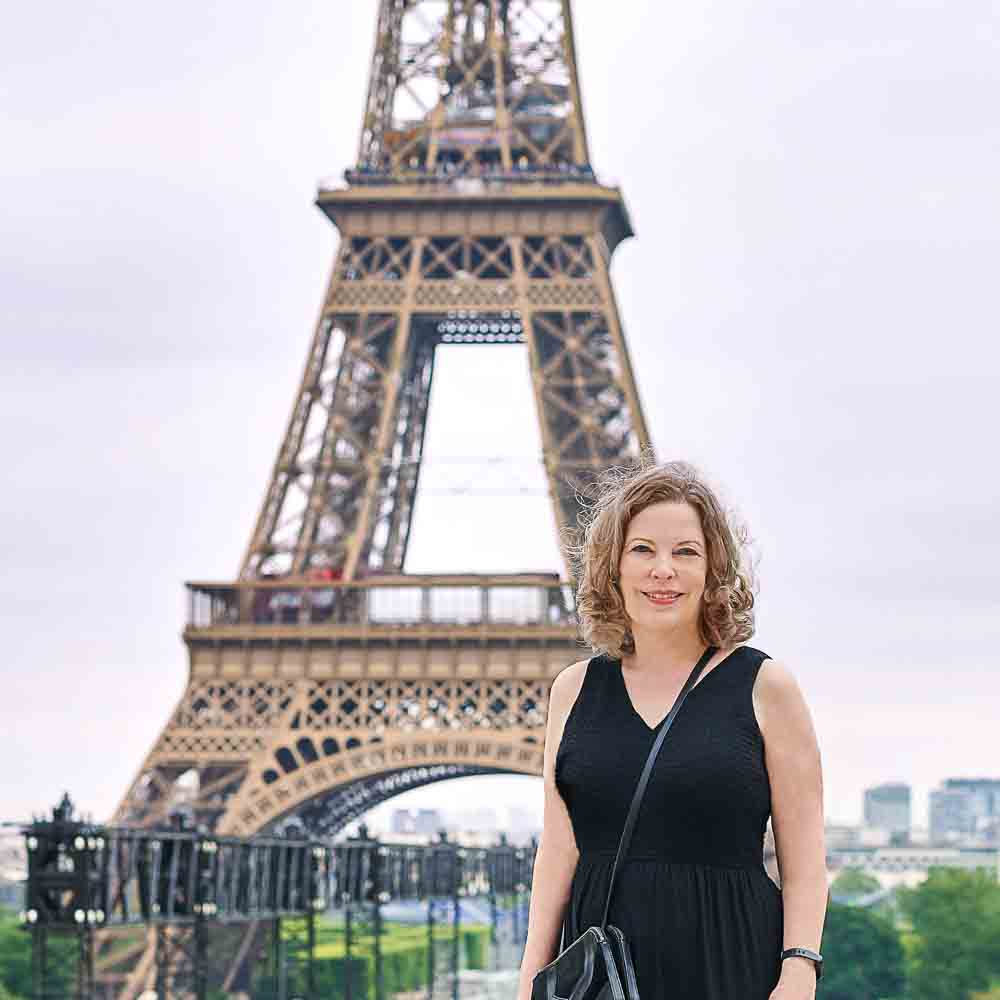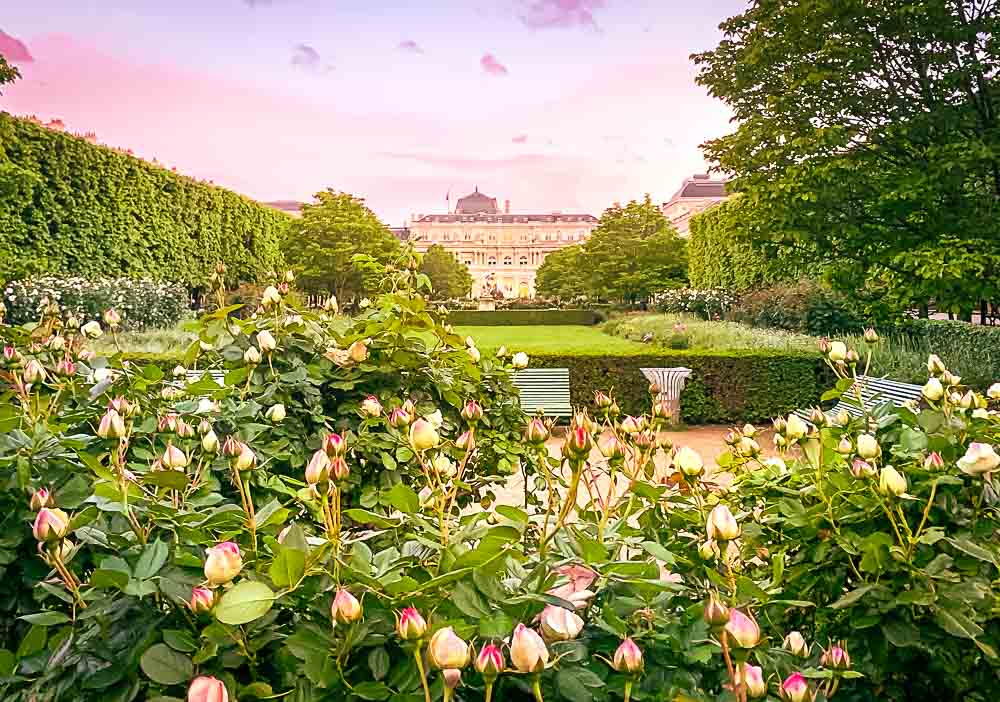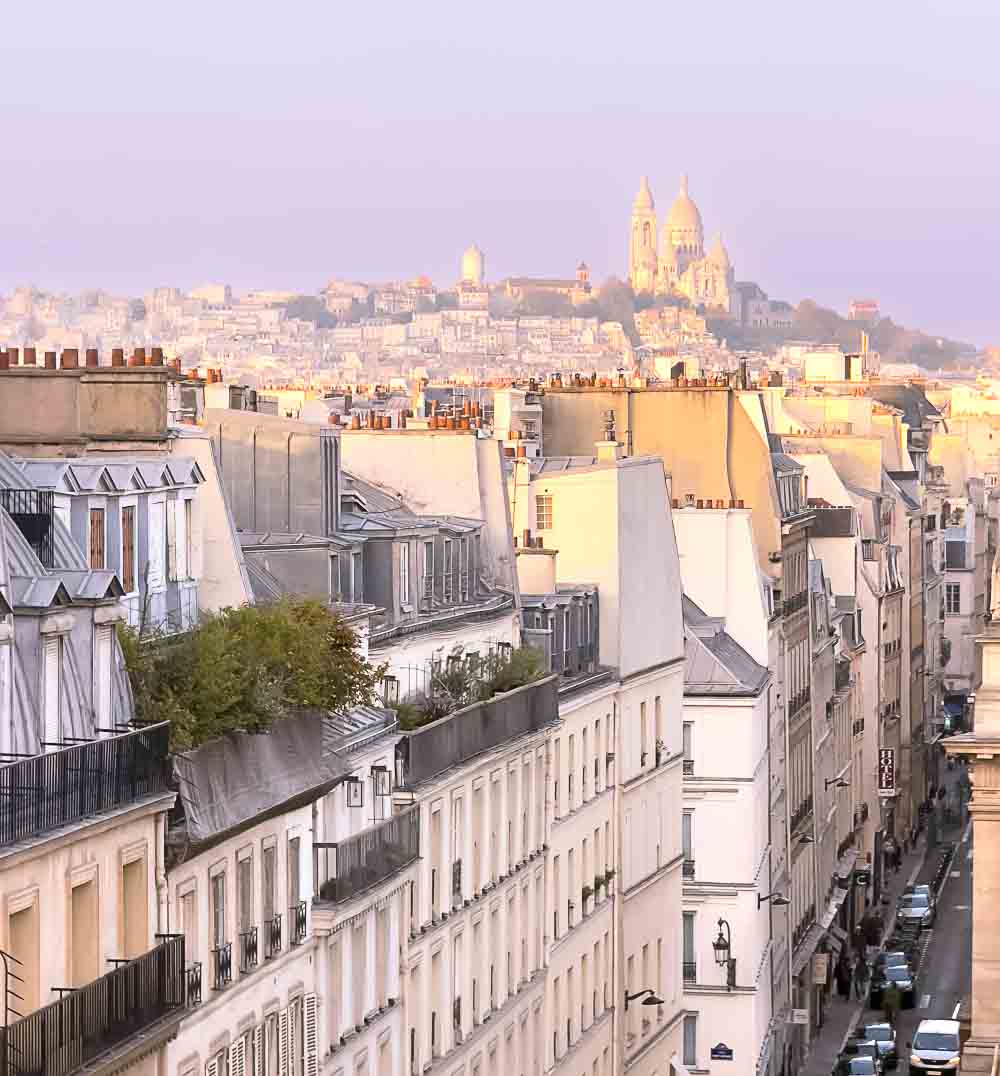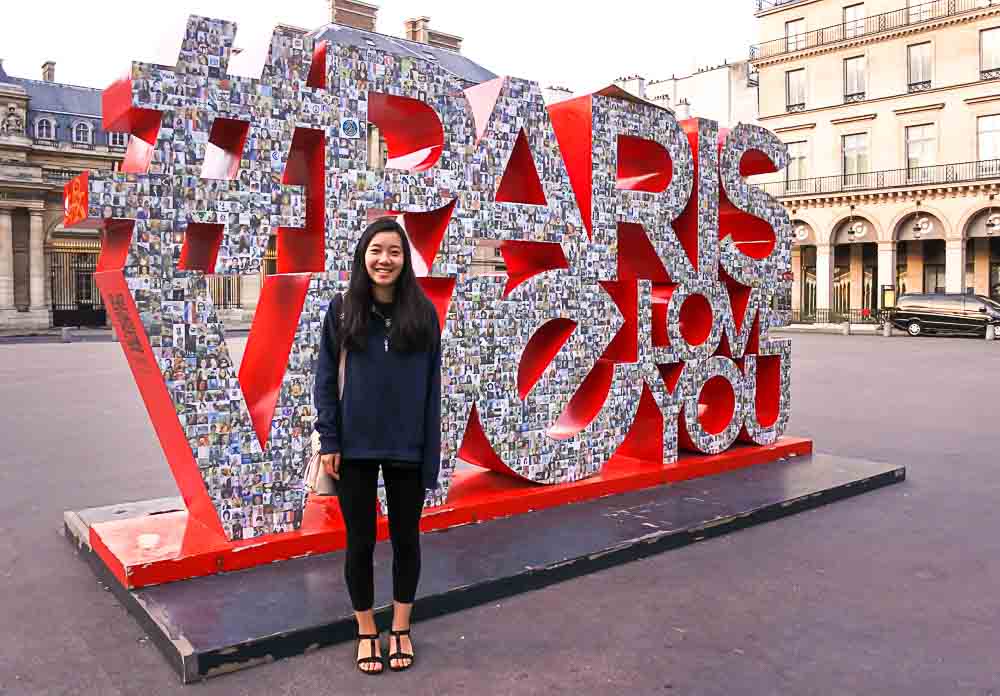Each year on November 1, Paris (and the rest of France) observes La Toussaint (All Saints Day), a solemn occasion focused on honoring the departed by placing flowers on their graves, spending time with family. and renewing the enduring bonds between the living and the dead.
If you're visiting Paris during this period, you may not have family or friends buried in the city, but All Saints Day (and the following week) is also a colorful time to explore Paris's historic cemetaries as gold and crimson fall foliage frames the tombstones and memorials.
Truthfully, I was kind of clueless about Toussaint for a long time, but once I finally understood its cultural significance and meaning, it's become one of my own favorite times to visit a cemetery or two.
But there's more to do on this special day beyond wandering around graveyards. If you're wondering about the best things to do on All Saints Day in Paris, that's what you'll find in this article:
- What Is All Saints Day?
- The Best Paris Cemeteries to Visit on All Saints Day
- An "Empire of Death" to Explore
- Where to Attend Toussaint Mass In Paris
- Where to Celebrate La Dia de los Muertos on All Saints Day
- What Else To Do on Toussaint
One more thing to know about All Saints Day: The 2-week fall vacation observed by schools across France is known as the Toussaint School Holiday (normally just called Toussaint) because it always includes All Saints Day. You should expect family-friendly attractions to be more crowded than normal during this period.
Top photo: Views of Passy Cemetery on All Saints Day
Paris Discovery Guide is a reader-supported publication. When you buy through my links, I may earn a small commission at no additional cost to you. Merci beaucoup for your support!
What is All Saints' Day?
Despite occurring on the day after Halloween and the same day as La Dia de los Muertos, All Saints Day (Toussaint) is not directly related to either of them. Instead, it is a solemn religious and family-centered occasion - and much more significant to many Parisians.
Toussaint (short for La Toussaint, which in turn is short for Tout les Saints, or All Saint's Day) takes place on November 1 - coincidentally about the date when Paris's beautiful fall foliage reaches its golden and crimson peak.
What is Toussaint?
Toussaint (short for La Toussaint, which in turn is short for Tout les Saints, or in English, "All Saint's Day") has its roots in old cultural traditions dating back over 2,000 years ago when people honored the Dead every spring with dancing, feasting, and bonfires.
After Christianity swept through present-day France, these earlier celebrations became transformed during the 6th and 9th centuries into two closely related religious observances: All Saints Day on November 1, which honors recognized as well as unknown saints, and All Souls Day on November 2, when people pray for the "faithfully departed."
Although both All Saints Day and All Souls Day are Roman Catholic and Orthodox holy religious days (plus some other religious groups such as Anglicans also recognize them), France observes only Toussaint as a public holiday - so that's when most commemorations take place.
Parisians typically visit cemeteries on All Saints Day, clean the graves of their loved ones, and then place candles and pots of flowers such as chrysanthemums on top or nearby. Anyone who is religious might also attend a Toussaint Mass or church service. In case you want to do that, I've included a list of churches further down in this article.
What's Open, What's Closed in Paris on All Saints Day
If your Paris visit includes All Saints Day, will your plans be impacted?
Probably not. Although banks, government offices, and many businesses will be closed, most stores, restaurants, museums, and other attractions remain open, especially in the more tourist-centric single-digit arrondissements.
The Most Iconic Thing to Do In Paris on All Saints' Day: Visit a Historic Cemetery
To experience All Saint's Day in the traditional way, stroll through one of Paris's fascinating historic cemeteries and admire the flowers placed on graves as well as the gorgeous autumn foliage on display.
For your visit, I suggest choosing one of the city's five most evocative graveyards, including one which opens to visitors only on Toussaint.
1. Père Lachaise Cemetery (Cimetaire du Pete Lachaise), the Garden of the Dead
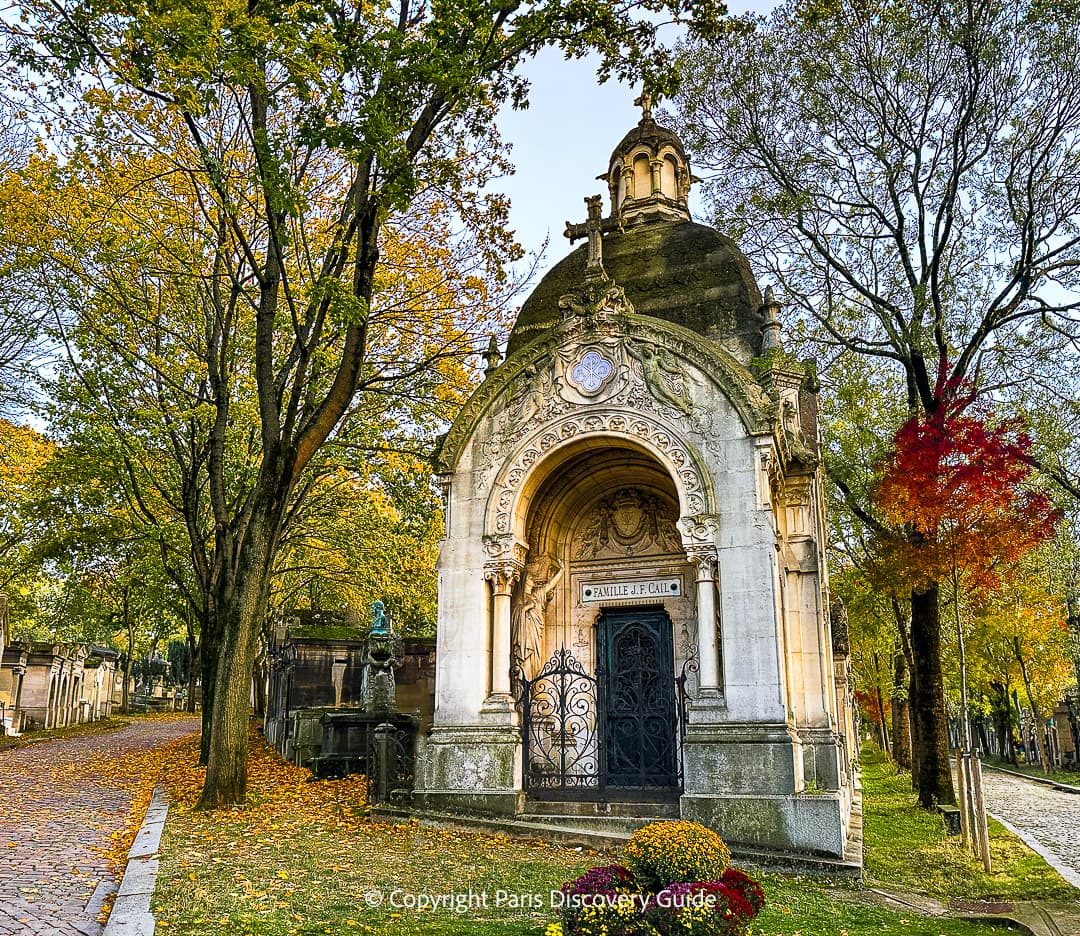
Parisians call Père Lachaise Cemetery "la Cite des Morts" - the City of the Dead, and it's where you'll see the most numerous floral arrangements as well as the largest numbers of visitors paying their respects on All Saints' Day. This is also where you can see the city's loveliest, most poignant, and, shall we say, quirkiest tombstones and memorials.
Spread across rolling hills in eastern Paris, Père Lachaise's gorgeous landscaping, hauntingly beautiful tombs and memorials, winding cobblestone lanes, and celebrity graves make it a top attraction throughout the year. It is considered the world's first "garden cemetery," and it definitely lives up to this label. It's also Paris's largest cemetery.
The cemetery is especially splendid on All Saints' Day when the combination of amber-hued fall foliage and pots of colorful flowers will make you feel as though you just stepped into an Impressionist painting by Monet or Renoir.
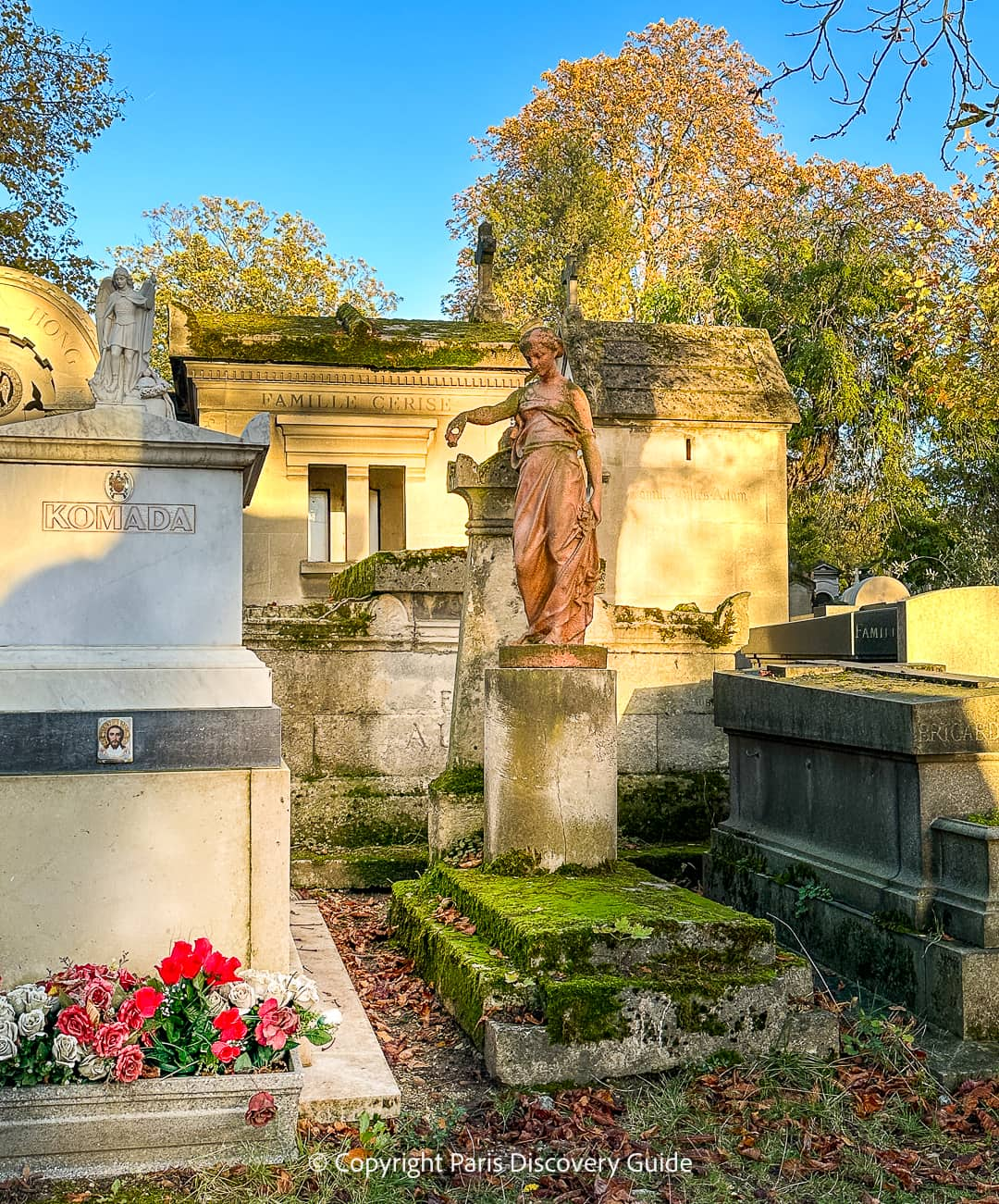
True to its nickname, Pere Lachaise does truly seem like an ancient city, filled with around 70,000 burial plots adorned with a total mish-mash of funerary art and architectural styles spanning many centuries and traditions.
Spend even half an hour strolling around, and you'll likely spot Medieval Gothic sepulchers, sleekly polished contemporary granite slabs, elaborate Italian Renaissance family chapels, and skulls carved on headstones, along with Eastern Orthodox domes, beautifully poignant Art Nouveau sculptures of weeping women, imposing Neoclassical and Second Empire monuments, realistic statues of soldiers standing on top of war memorials, and simple Romanesque headstones.
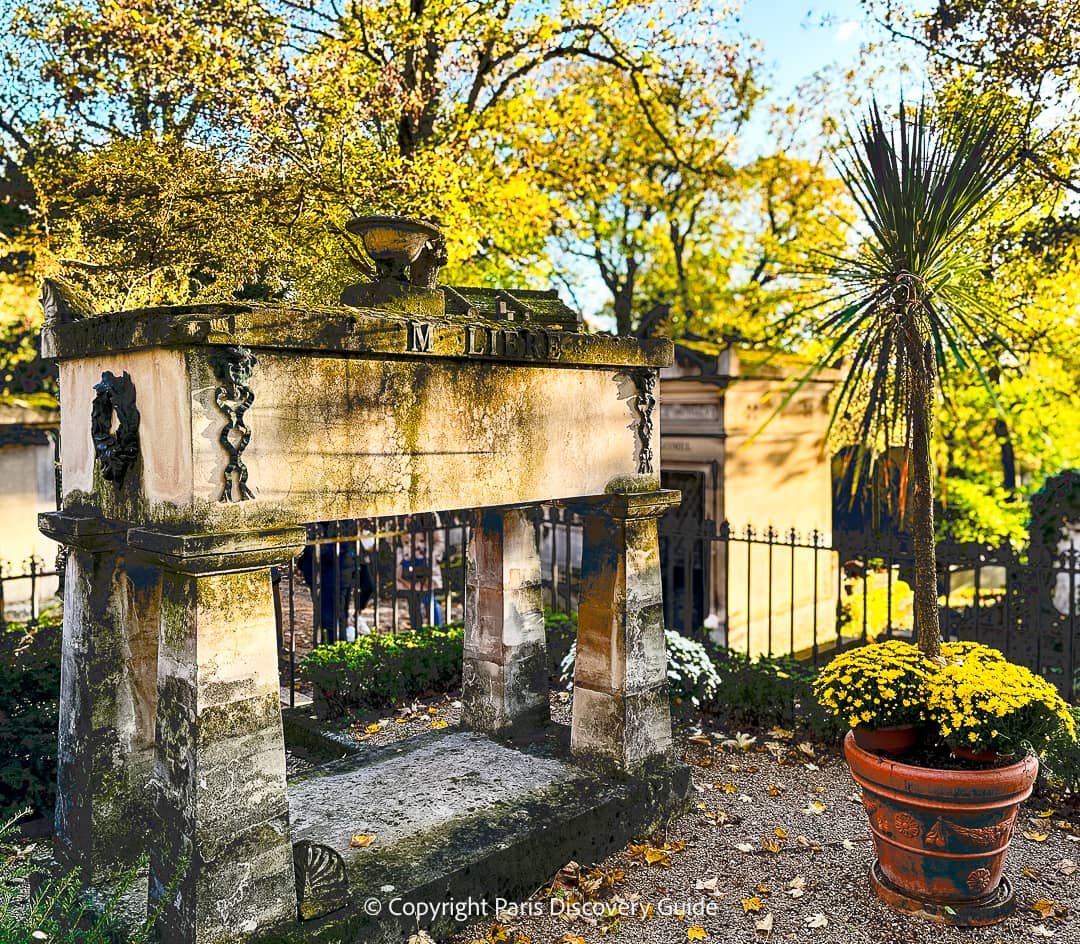
Cimetaire Pere Lachaise is also where you can find the greatest number of graves of famous people and celebrities - playwright/actor Molière, poet La Fontaine, writer Colette, Baron Haussmann, Isadora Duncan, Modigliani, Maria Callas, Frédéric Chopin, Edith Piaf, Allan Kardec, Oscar Wilde, Ahmet Kaya, Victor Hugo, and Jim Morrison, frontman for The Doors, just to name a few.
However, those are not necessarily the tombs where you'll find flowers, except for Morrison's grave where his steadfast fans leave bouquets of roses, plus a few others among the recently-departed. Many of the most famous passed on long ago, with no connections still alive and able to visit today.
Instead, many of the floral arrangements, candles, and other mementos adorn the graves of people whose names you may not recognize, but who still have family and friends who honor their memories by visiting the graves on All Saints Day.
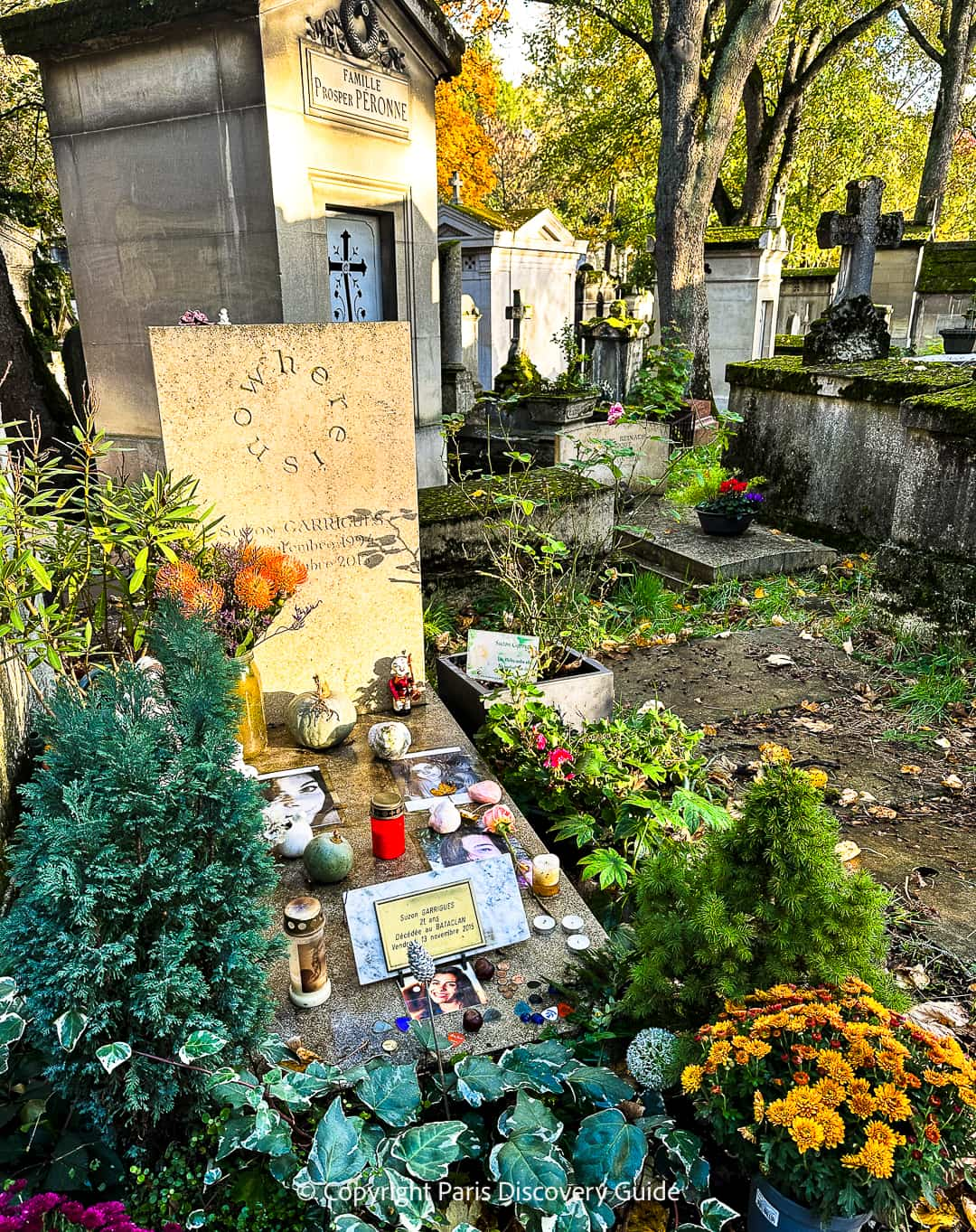
The best way to visit Pere Lachaise for the first time, especially if you want to see the most famous graves, is to join a guided small group tour, where your guide will lead you to the graves of the famous artists, writers, and musicians buried here and will entertain you with stories about these and other "permanent residents."
If you love spooky stories and the macabre, the Haunted Père Lachaise Cemetery Tour is both fun and fascinating.
You can also, of course, just wander around on your own. Even when the weather is far from ideal, Pere Lachaise is a beautiful, fascinating, and evocative spot in a less-traveled part of Paris - not quite a "hidden gem" because it's so well-known, but certainly off the usual well-beaten path of many tourists.
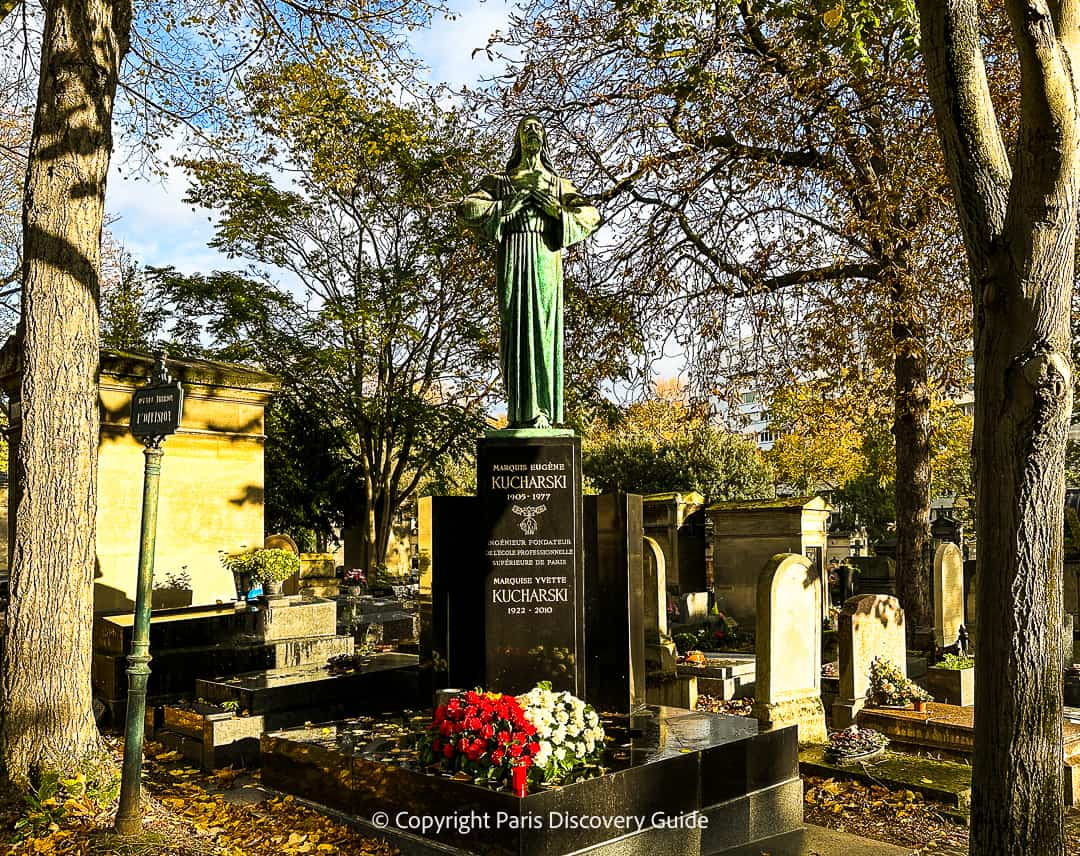
How to Get to Pere Lachaise Cemetery
Location: Menilmontant neighborhood in Paris's 20th arrondissement
Main entrance: Principal Entrance, 21 Boulevard de Menilmontant; Other accessible entrances: Repos Entrance at 16 Rue du Repos, and Gambetta Entrance, Rue des Rondeaux, opposite Avenue du Père Lachaise near the Gambetta Metro station; Entrances with stairs (avoid if you have mobility issues): Amandiers Entrance, corner of Blvd de Menilmontant and Avenue Gambetta, and Reunion Entrance, where Rue de la Reunion dead-ends at the cemetery
Closest Metro stations: Père Lachaise (Lines 2, 3), Blvd de Menilmontant and Avenue Gambetta, 20th arrondissement; the station at the corner of a non-accessible entrance with stairs and a couple of blocks from the cemetery's main entrance; Philippe August (Line 2; a couple of blocks from the main entrance); Gambetta (Lines 3, 3B - a couple of blocks from the Rue des Rondeaux entrance near the crematorium
Hours on November 1: Monday - Friday 8am - 6pm; Saturday 8:30am - 6pm, Sundays and Bank Holidays, 9am - 6pm
Visitors Tip: Even though many Parisians and others come to Pere Lachaise Cemetery on All Saints' Day, the cemetery is so large that it never feels crowded - in fact, in many parts of it, you won't even see other visitors.
Our Top Articles about Visiting Paris Cemeteries
2. Passy Cemetery on All Souls Day
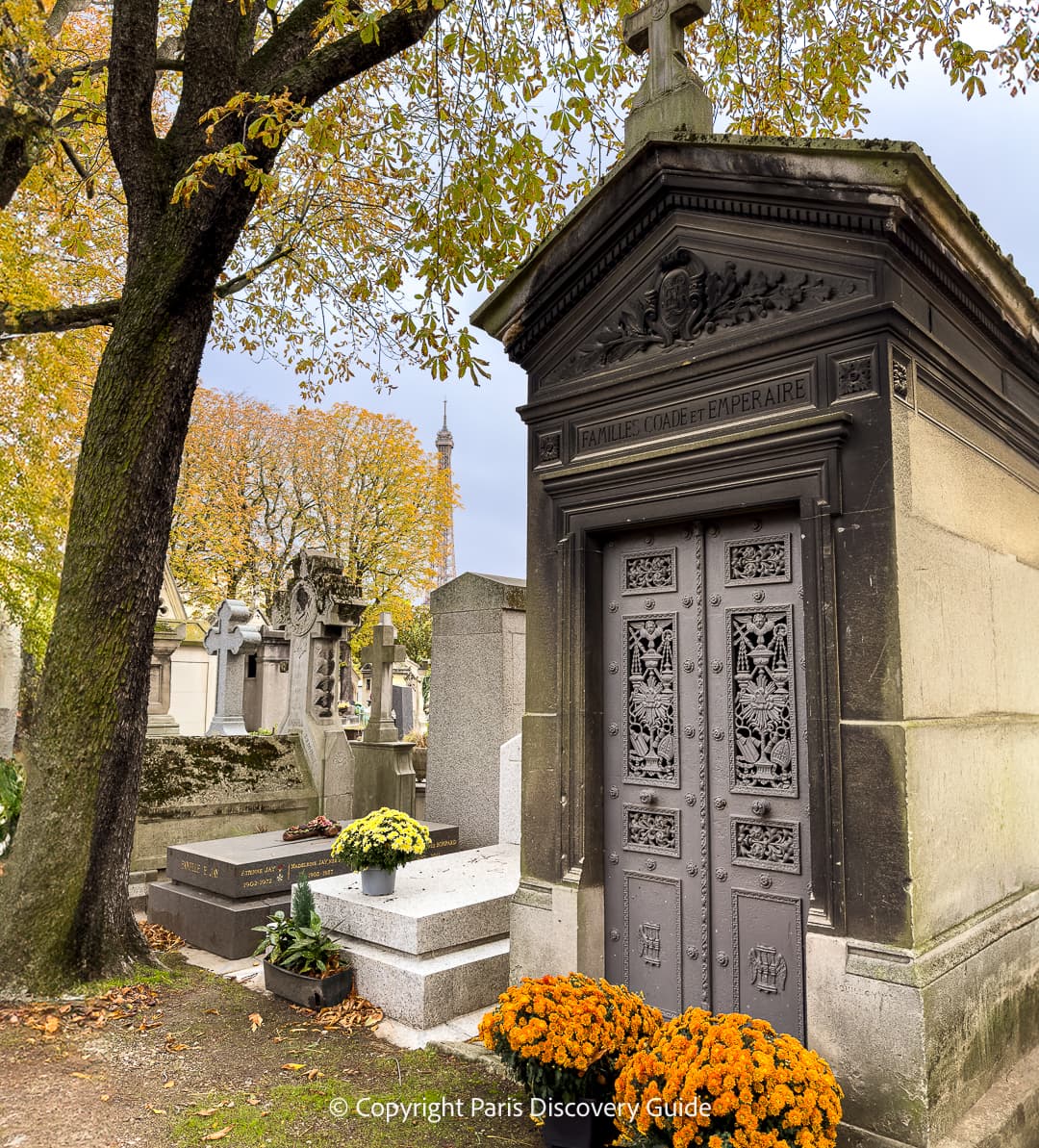
Although Passy Cemetery ranks among the smaller Paris burial grounds, it contains a fascinating assortment of elaborate tombs, including a re-creation of an artist's studio, that reflect the wealth and elite status of its permanent residents when they were alive. The cemetery's location along with its Eiffel Tower view in the prestigious 16th arrondissement would no doubt have their approval.
Most of the photos in this section show the graves on November 2, thd day after All Souls Day, when all the recently-placed flowers on the cemetery's elaborate tombs still looked fresh and beautiful.
With glimpses of the not-so-distant Eiffel Tower and lavish displays of chrysanthemums and other flowers adding to its charming ambiance, Passy is the perfect place for a All Saints (or All Souls) Day visit, especially since you can also explore one of the excellent nearby museums while you're in the area.
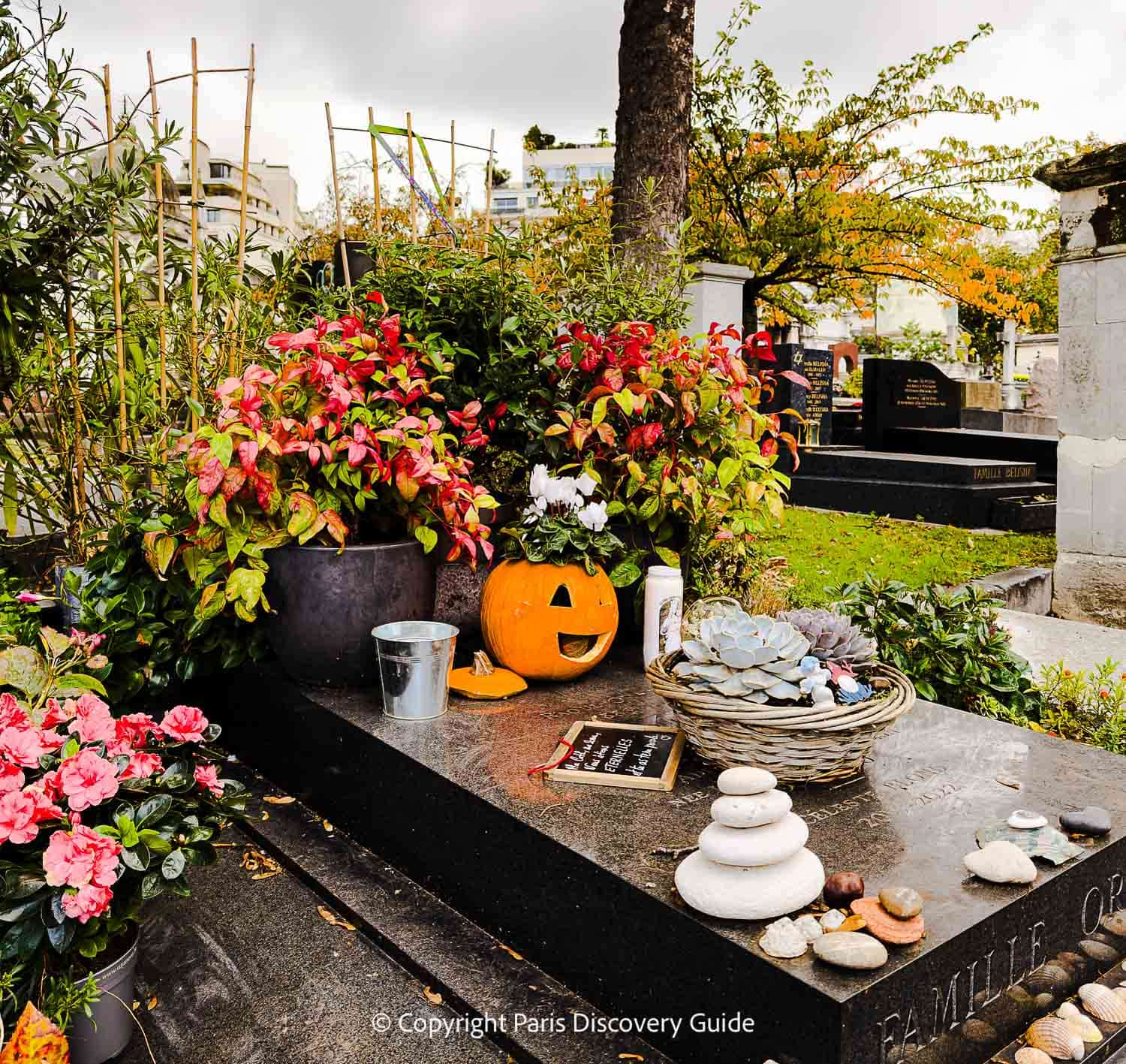
Take a quick stroll around this tranquil oasis, and you may spot memorials to famous perfume creator Jacques Guerlain, Bao Dai, the last Emperor of Vietnam, a Monaco princess and a Russian princess, and Princess Leila Pahlavi, a daughter of the Shah of Iran, and her mom, Farideh Ghotbi.
You'll also find the tombs of a few artists such as Berthe Morisot, Giraudoux, and Edouard Manet, as well as composers Claude Debussy and Gabriel Fauré.
Iconic fashion designer Gabrielle "Coco" Chanel is interred here as well.
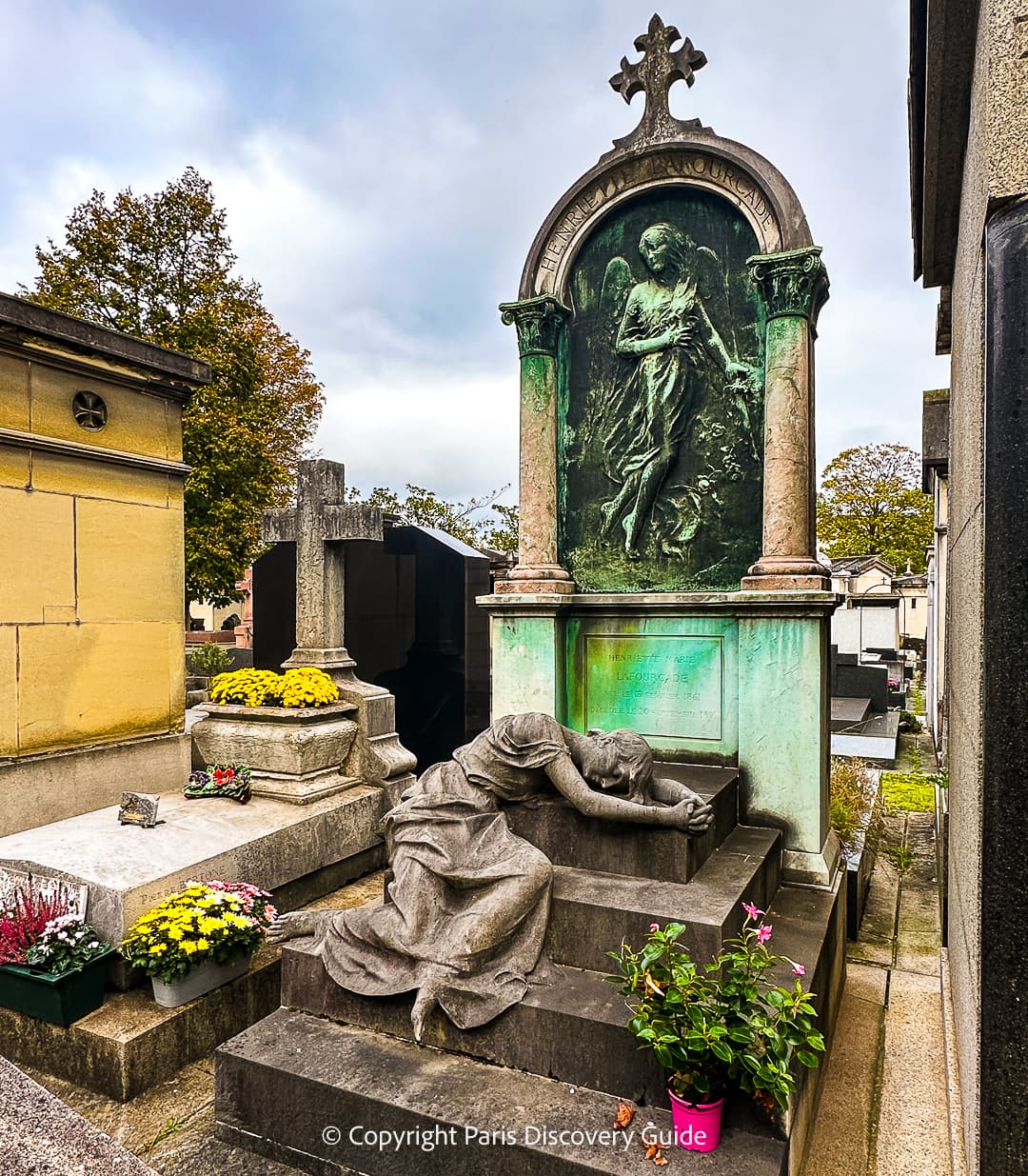
Near the cemetery's entrance, you'll spot a beautiful Neoclassical chapel, part of the graveyard's original design. This architectural gem sets the tone for the rest of the space, which reflects the wealth and social status of residents in the Passy neighborhood.
The cemetery itself is fairly small.
Combined with the grand scale of many of the memorials, it can feel rather cramped in some areas, especially toward the back where old sepulchers, marble temples, gothic chapels with jewel-like stained glass, ornate tombs the size of small villas, and other elaborate structures (some of which defy description) compete for space.
In some spots, you'll struggle to squeeze through the very narrow passages between them.
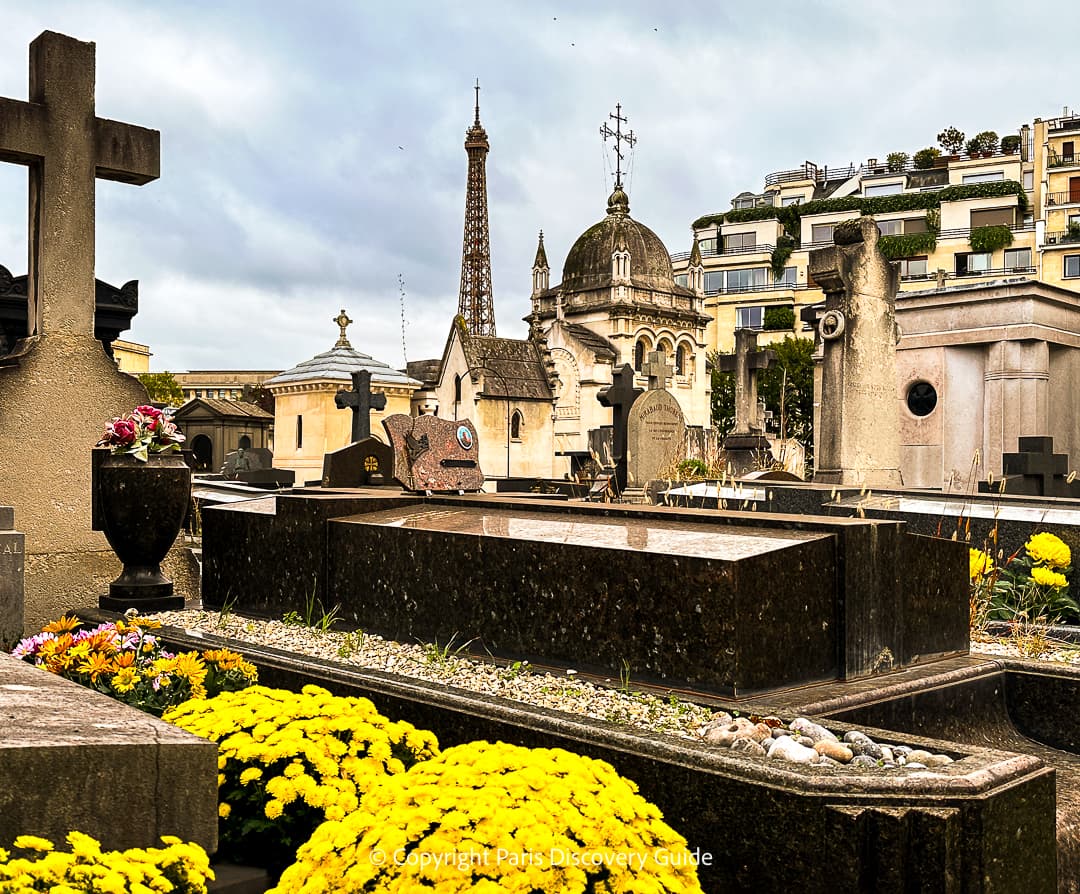
Because the cemetery is already filled a bit beyond capacity, new burials occur rarely except for families which already have plots - or for people with exceptionally impressive societal status or accomplishments.
Cimetaire Passy has long been associated with the aristocracy and the highest echelons of society, and it continues to be considered the most exclusive burial site in Paris.
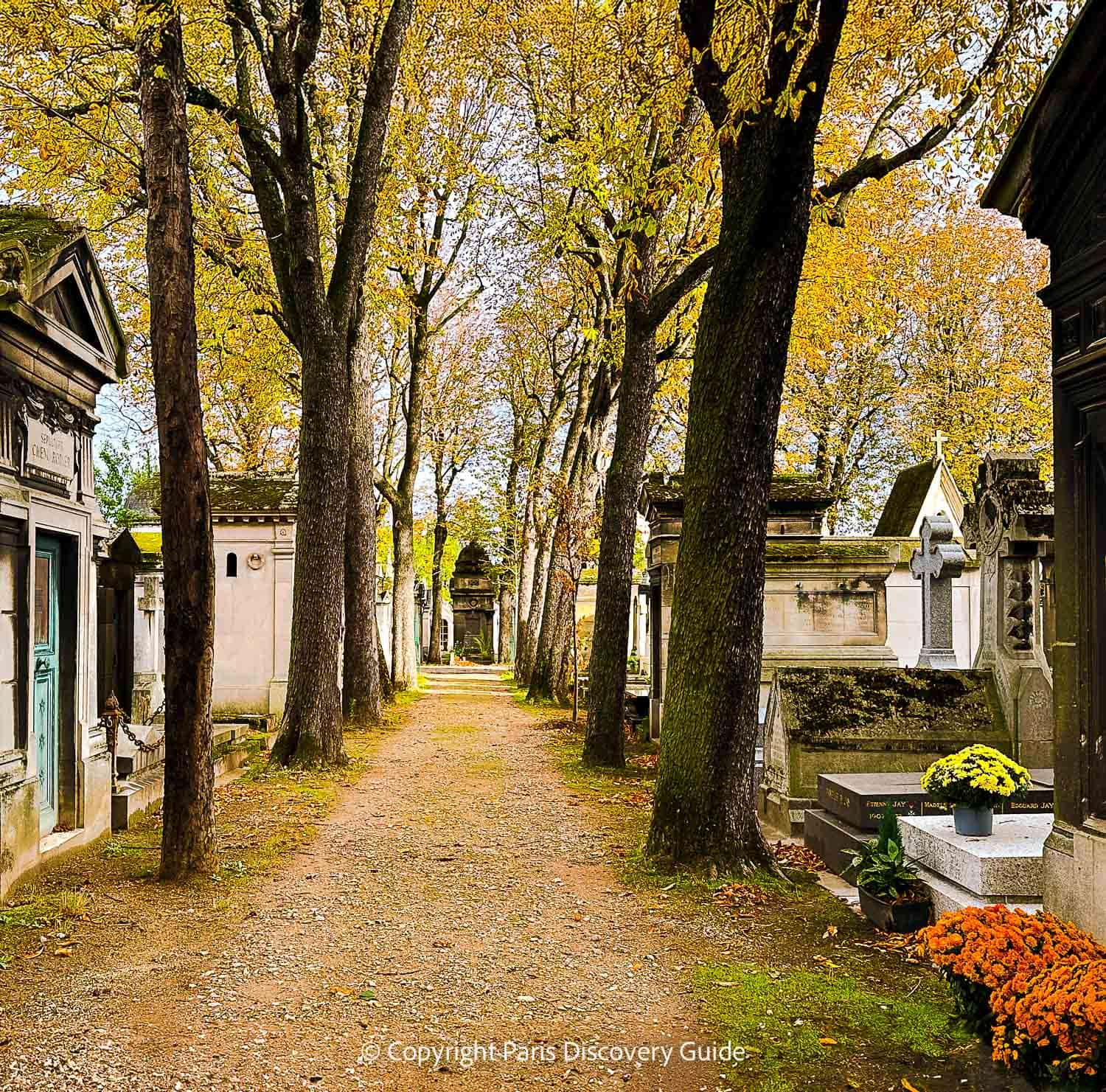
So what happens when the cemetery runs out of room?
In recent years, it has quietly removed the graves of lesser-known individuals to make way for more prominent new arrivals - a controversial practice, and perhaps not so different from tearing down small homes in prestigeous wealthy neighborhoods to make way for large mansions.
How to Get to Passy Cemetery
Location: 2 Rue du Commandant Schloesing, Paris 16; Nearest metro: Trocadero
Top Paris Museums near Passy Cemetery
Want visit one of Paris's top-rated museums after your stop to see the All Saints Day flowers? The National Maritime Museum (a hidden gem), Musée de l'Homme (anthropology museum - don't miss their special exhibitions), Cité de l'Architecture et du Patrimoine (fascinating almost-life size models of famous French architectural treasures), and the Paris Aquarium are all just a few steps away at Trocadero.
And of course, the city's most famous monument, the Eiffel Tower, dominates the Paris skyline on the other side of the Seine.
3. Montparnasse Cemetery (Cimetaire Montparnasse), Final Abode of Paris's Left Bank Intelligentsia & Creatives
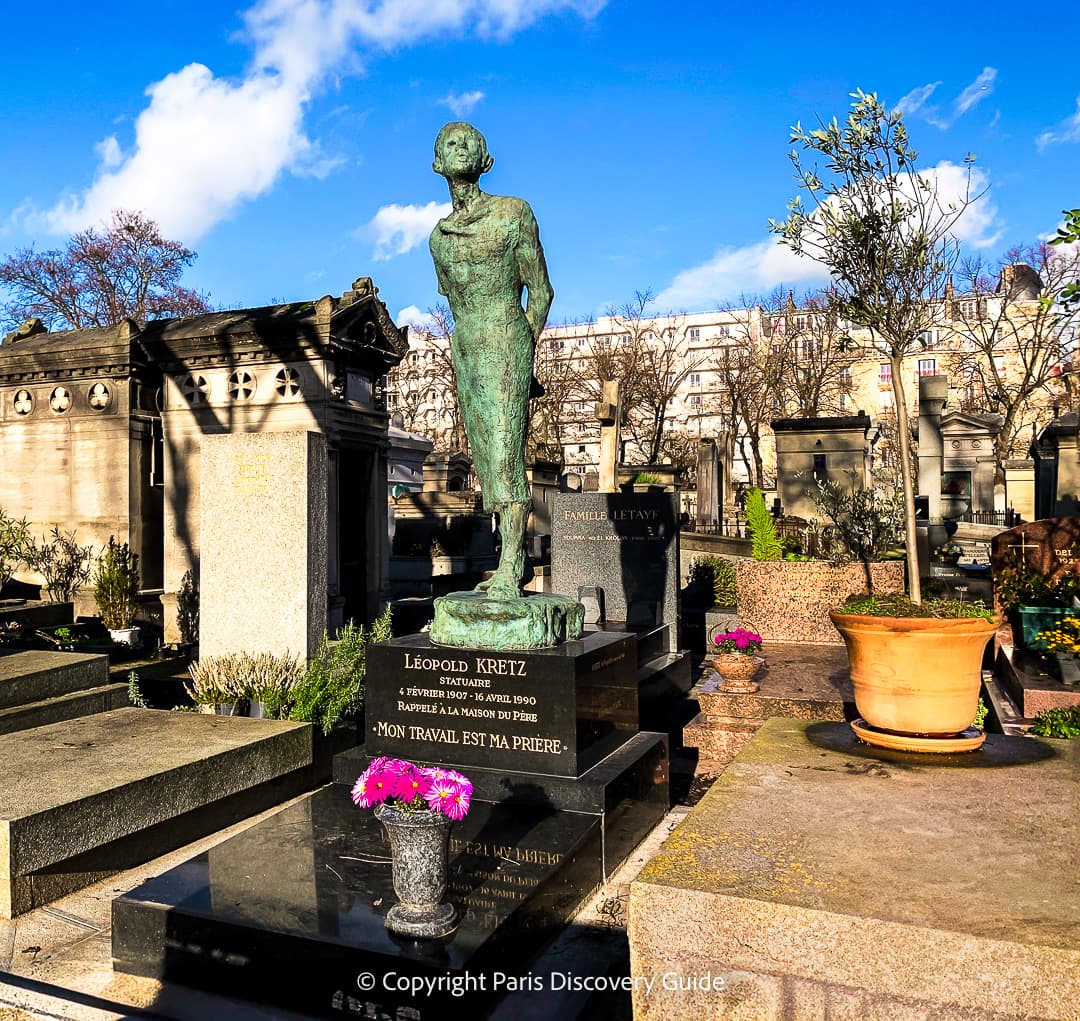
Even though Montparnasse Cemetery, a tranquil oasis near the Catacombs and the popular rooftop terrace at Montparnasse Tower, is Paris's second-largest cemetery, it's easy to overlook - but that would be a mistake.
Traditionally, this cemetery has been a popular final resting place for Left Bank philosophers, artists, and composers/musicians, especially those who made this part of Paris their home during the 20th century.
While you won't see as many over-the-top, super-lavish memorials here compared with the Pere Lachaise and Passy cemeteries, you'll still discovery plenty of wonderful (and in a few cases, quite quirky) funerary art to experience.
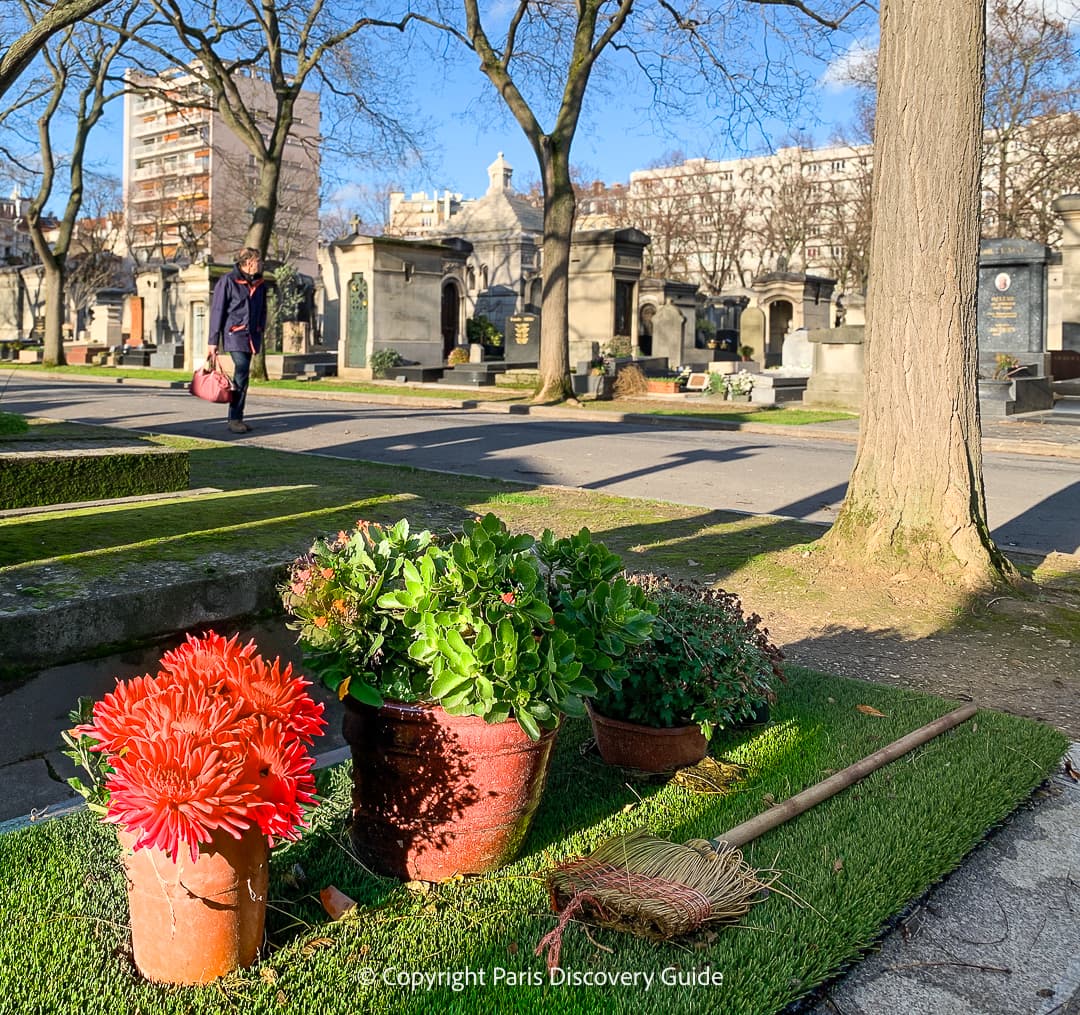
Like Pere Lachaise, Montparnasse Cemetery continues to be an active burial site, welcoming about a thousand new "permanent residents" each year.
On All Saints Day, their families and friends flock here to pay their respects and place chrysanthemums and other flowers on the graves.
The cemetery's expansive space and relatively flat terrain give it an open feeling despite the many trees.
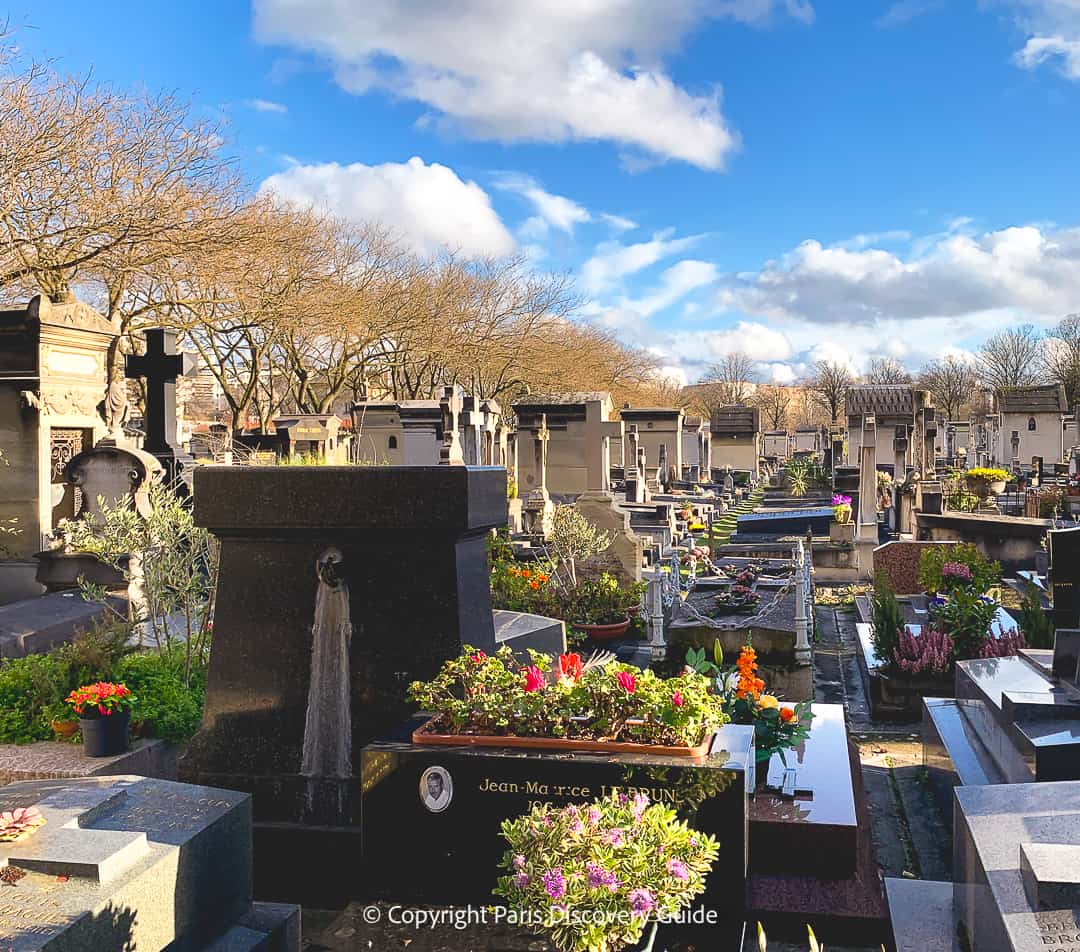
Filled with dappled light on sunny days but never really gloomy or melancholy, even in the rain, Cimetaire Montparnasse is where you'll often spot neighborhood residents out for an evening stroll.
As you walk around, you may be able to spot the graves of some of the famous occupants including philosophers (Simone de Beauvoir, Jean-Paul Sartre, Susan Sontag), writers (Charles Baudelaire, Samuel Beckett, Eugène Ionesco, Guy de Maupassant, Marguerite Duras), and actors and directors (Jean Seberg, Eric Rohmer).
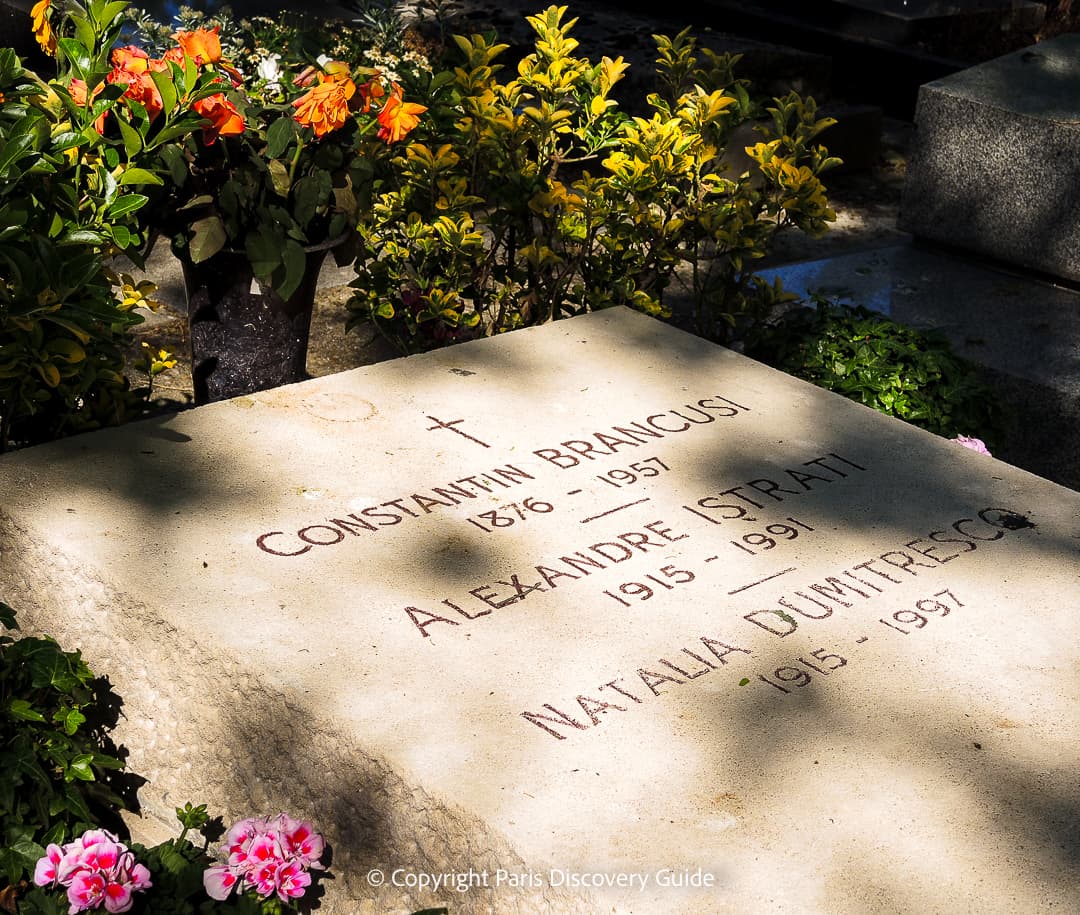
Also look for musicians and composers (Camile Saint-Saens, Cesar Franck, Jean-Pierre Rampal, Serge Gainsbourg, Jane Birkin), artists (Constantin Brancusi, Ossip Zadkine, Man Ray, Antoine Bourdelle), and even the famous organ builder, Aristide Cavaillé-Coll, whose creations fill a number of Paris churches with magnificent sound.
Although the cemetery contains plenty of wonderfully artistic tombs, the most famous sculpture is one that you can no longer actually see: a version of Brancusi's "The Kiss" topping a memorial for a young woman named Tatiana Rachevskaïa, now covered by a box due to a legal dispute involving ownership.
The City of Paris has declared this memorial a cultural monument to prevent its removal from the country - but the stalemate related to its fate drags on.
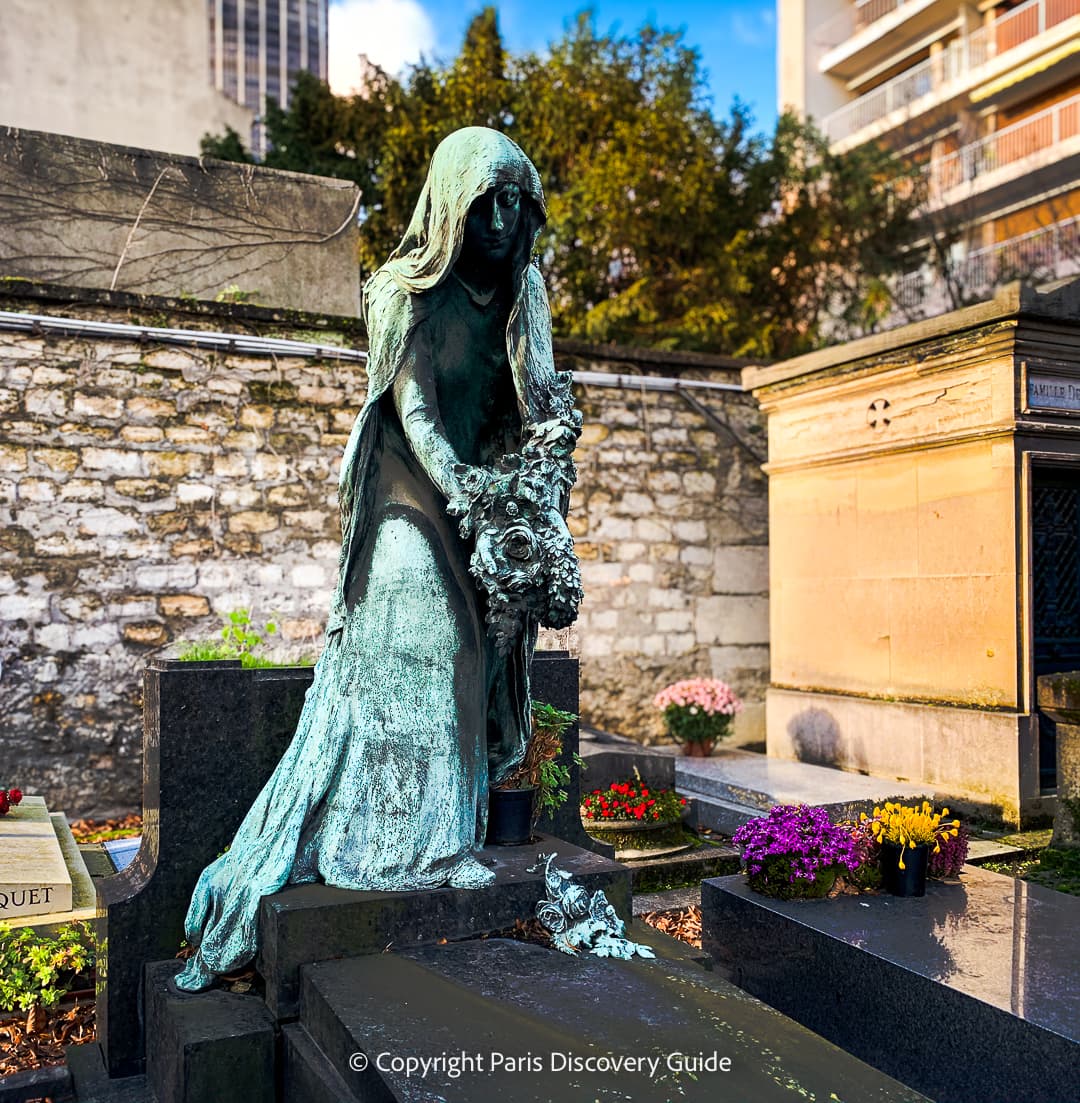
A Fun Fact about Montparnasse Cemetery
Far below the caskets and underground tombs at Montparnasse Cemetery lies part of another vast burial site: the Paris Catacombs.
Although there's no direct passage between the cemetery and the abandoned quarry tunnels that became the Paris Catacombs, the entrance of the famous underground "Empire of Death" is just a few blocks away.
More to Experience Nearby
Don't miss the wonderful views of the Paris skyline including the Eiffel Tower from the covered observation deck and open-air rooftop terrace at nearby Montparnasse Tower!
Both viewing areas are open on All Saints Day, and the Observatory even stays open until 11pm - half an hour later than normal for this time of the year, since Toussaint is a public holiday.
The colorful Marché Edgar Quinet street market sets up along Boulevard Edgar Quinet near the cemetery's northwestern corner. Like virtually all farmers markets in Paris, it will be open on All Saint's Day if the holiday falls on one of the market's regular days, Wednesdays and Saturdays (8am - 2pm).
Cafes and bistros near the market offer a variety of different cuisines, and all of the ones where we've eaten over the years have been quite good.
You can also buy carryout from several vendors at the market - but do NOT take them into the cemetery for an impromptu picnic, as that's strictly forbidden.
Visitor Information for Montparnasse Cemetery
Main Entrance: Boulevard Edgar Quinet, 14th arr, with additional entrances on Rue Froidevaux and Boulevard Raspail
Nearest Metros: Raspail, Montparnasse, Vavin, Edgar-Quinet, Denfert-Rochereau
Admission: Free
Open: Mid-March - Early November: Monday - Friday 8am - 6pm; Saturday 8:30am - 6pm, Sundays and Bank Holidays, 9am - 6pm; during the rest of the year, the cemetery opens half an hour later and closes half an hour earlier each day
4. Montmartre Cemetery (Cimetèire Montmartre)
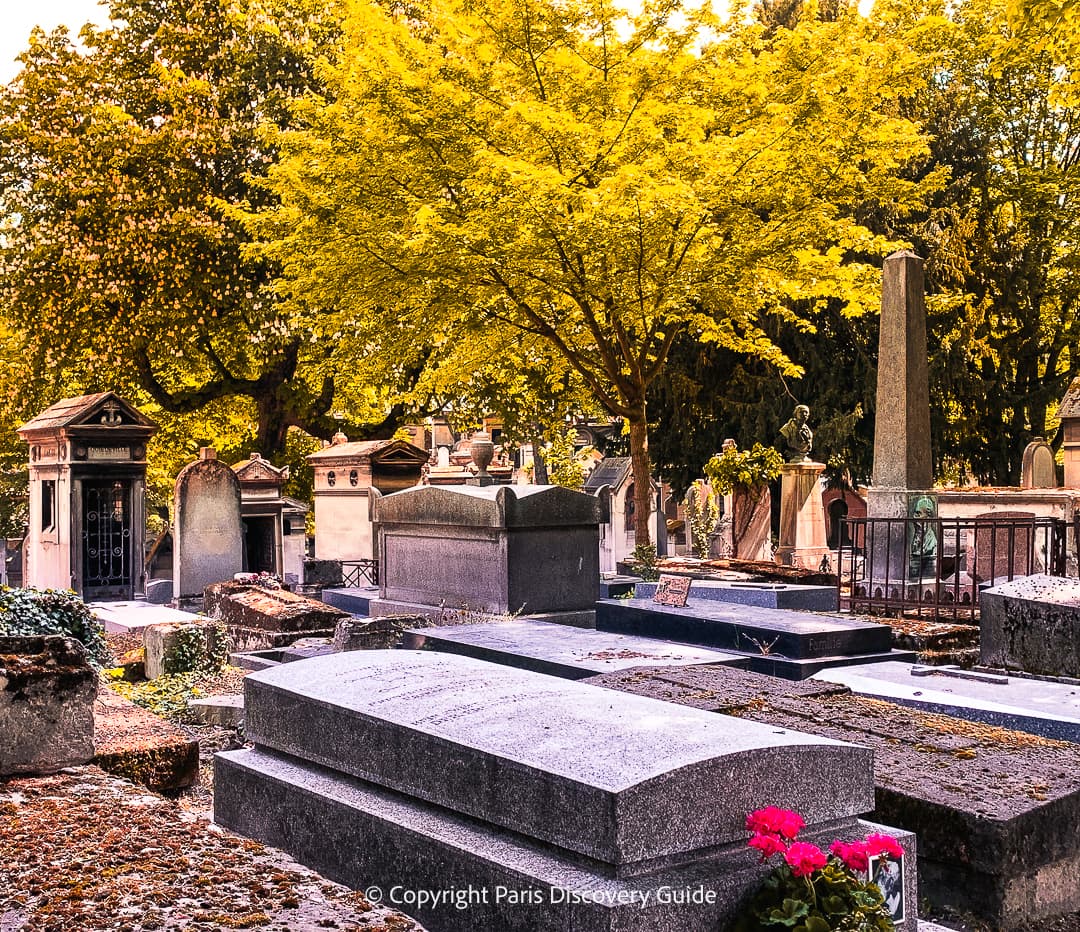
Montmartre Cemetery, smaller than either Pere Lachaise or Montparnasse, occupies a secluded corner of the Abbesses Butte Montmartre quartier.
But even though the cemetery opened two centuries ago, it's only the most recent layer of history in this particular spot. Under it lies an even older mass burial site containing the remains of those executed during the French Revolution.
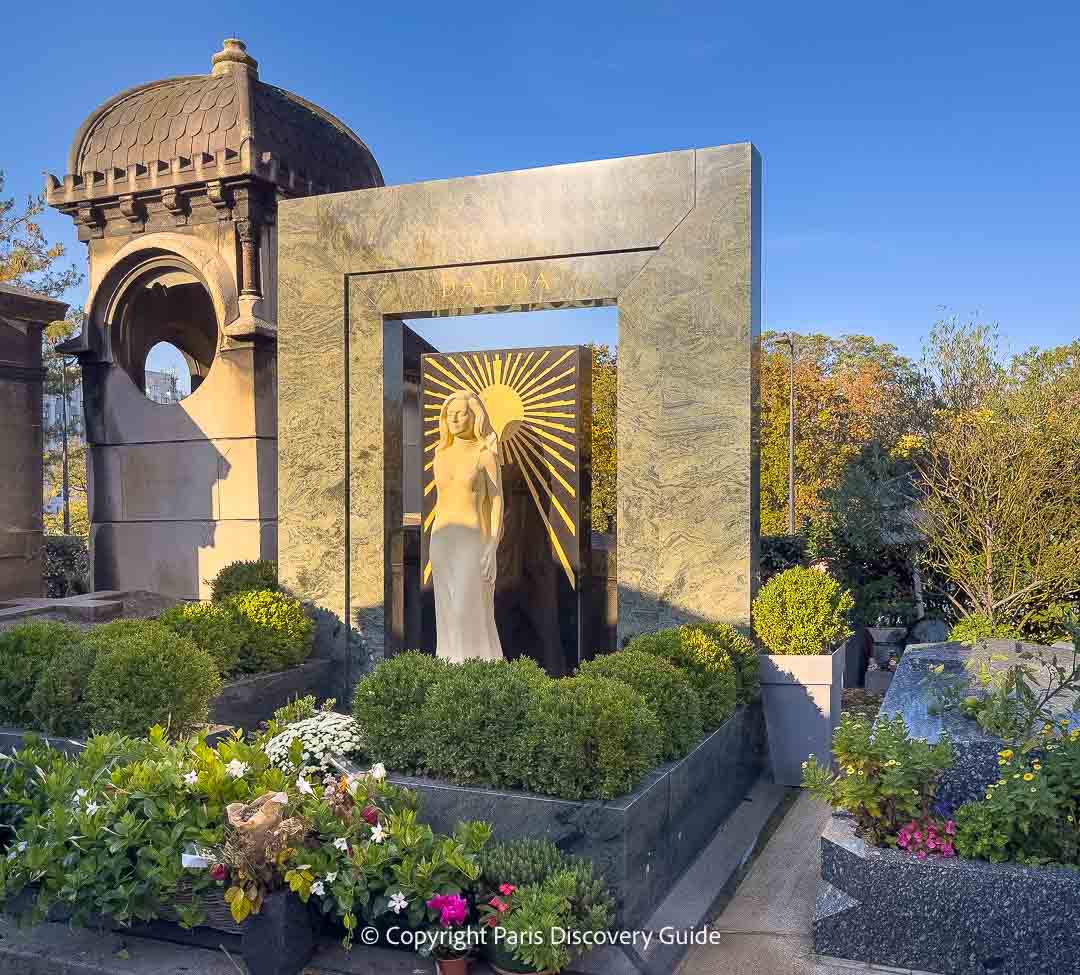
Although you'll find far fewer graves of famous people here compared with Paris's other major cemeteries, there is one celebrity memorial at the far northeastern corner of the cemetery that you should not miss: a large and magnificent gold and white monument commemorating Dalida (Iolanda Cristina Gigliotti), a famous mid-20th century French-Italian singer and actress.
You can also discover the final resting places of a number of other creative elites including François Truffaut, Gustave Moreau, Heinrich Heine, Stendhal, Alexandre Dumas, Dalida, and Edgar Degas.
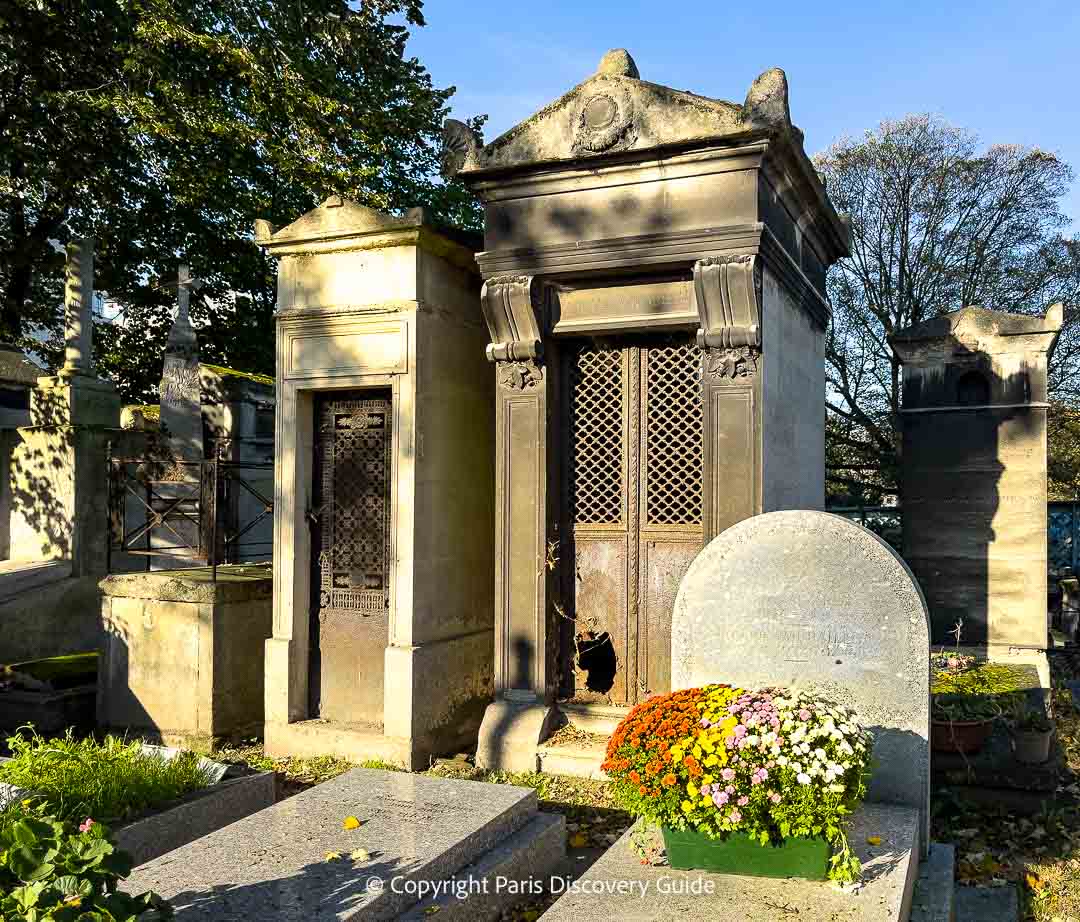
Reputedly home to a band of feral cats (Ie've never actually seen them, even though I always look for them), Cimetière Montmartre normally attracts only a trickle of visitors and relatively few flowers on All Saints Day compared with other major cemeteries.
But you can always see a bank of flowers at Dalida's memorial.
Montmartre Cemetery Address: 20 Avenue Rachel, 18th arr; Metro station: Edgar Quinet (Line 6)
More to Do Nearby: If you haven't already explored Montmartre's charming main streets and backstreets, now is the perfect time to do that. To get oriented and see the top attractions, join a neighborhood walking tour.
5. Calvary Cemetery (Cimetèire du Calvaire), Open to the Public Only on All Saints' Day
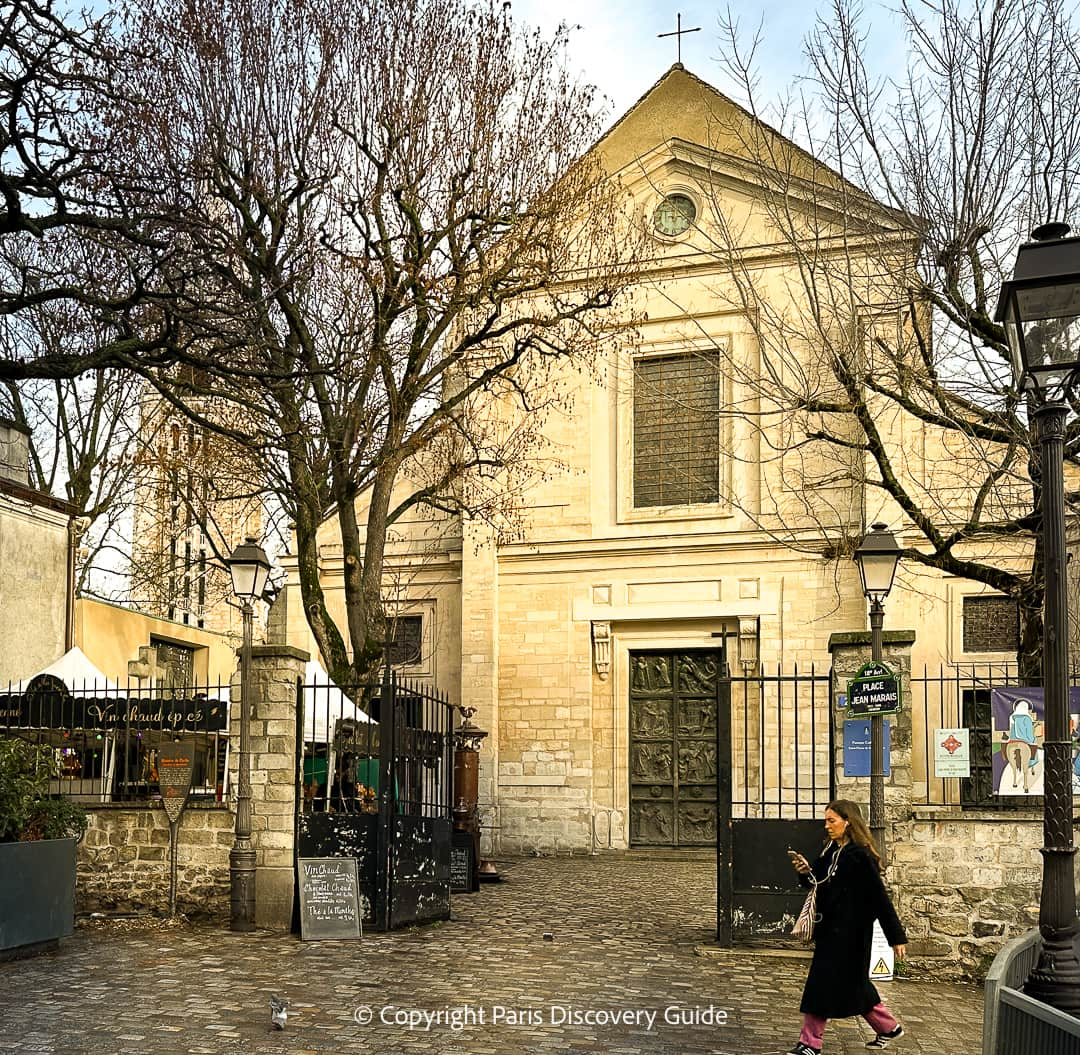
Cimetiere du Calvaire, tucked away behind an ornate bronze gate next to Eglise Saint-Pierre de Montmartre and about a 5-minute walk from the much more famous Sacre Coeur Basilica, is one of the oldest and smallest Paris cemeteries, with only 85 tombs - although keep in mind, one tomb typically contains many bodies.
Calvary Cemetery opened three years before Pere Lachaise in 1801 at the site of both a somewhat older graveyard originating around1688 that was destroyed during the Revolution as well as, archaeologists now believe, a much older 12th century common burying ground. It's one of only two Paris cemeteries to still be located next to a church.
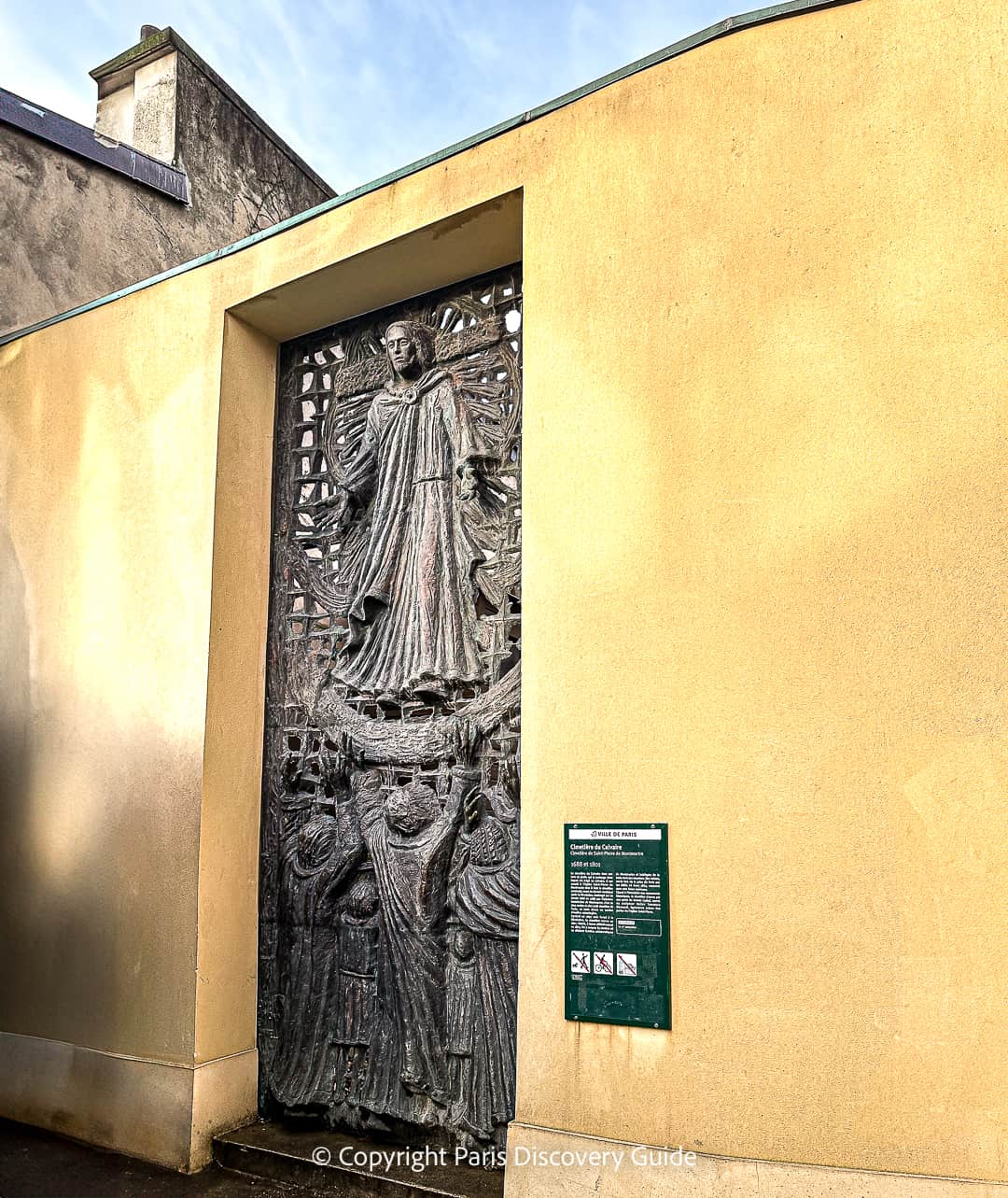
Some Calvary Cemetery tombs contain the remains of villagers who lived in today's Montmartre neighborhood (which did not become part of Paris until 1860) - most notably the Debray family of millers, best remembered today for opening a guinguette (country-style dance hall with bar) by the Blutte-Fin mill.
The Debrays called their establishment Moulin de la Galette, and it evolved into today's famous Moulin Rouge cabaret. To spot their tomb, just look for the one with a small red windmill on top.
The cemetery also includes a common grave containing the remains of soldiers killed during the 1814 Battle of Paris, which marked the end of the Napoleonic Wars, the decades-long attempt by Napoleon Bonaparte to conquer the rest of Europe.
However, most tombs mark the burial sites of members of the nobility who resided in Montmartre and the adjacent area to the south in 9th arrondissement.
No doubt they were well-known during their lifetimes, but today are mostly forgotten - unlike the famous artists, composers, actors, musicians, scientists, and even more recent royalty whose graves continue to attract fans to the Pere Lachaise, Montparnasse, Montmartre, and Passy Cemeteries.
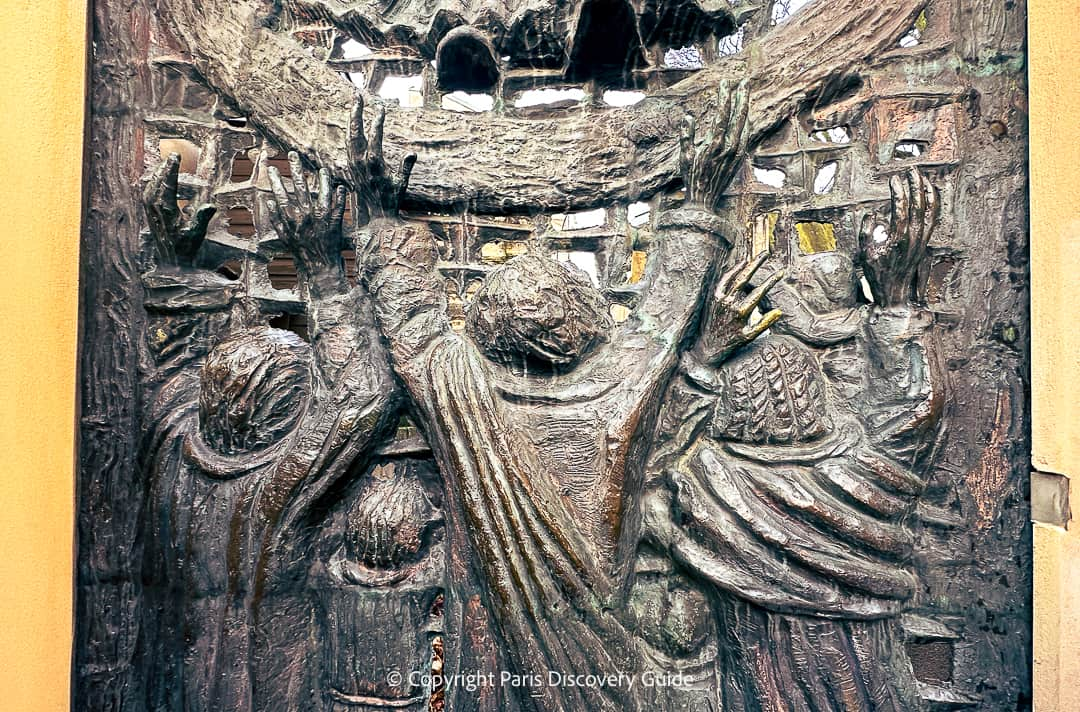
The cemetery reached its full capacity in 1823 and most burials ended in 1831 when Montmartre's Saint Vincent Cemetery opened, with one exception: descendants of families which already have a tomb here. The most recent burial took place in 2010 when a relative of the local Debray family was laid to rest.
Despite Cimetaire du Calvaire's location on one of the city's highest elevations, few people today have actually seen it, aside from tantalizing glimpses through tiny openings in the locked bronze gate at its entrance.
That's because the only time that you can visit, aside from occasional special openings on European Heritage Day, in on All Saints Day.
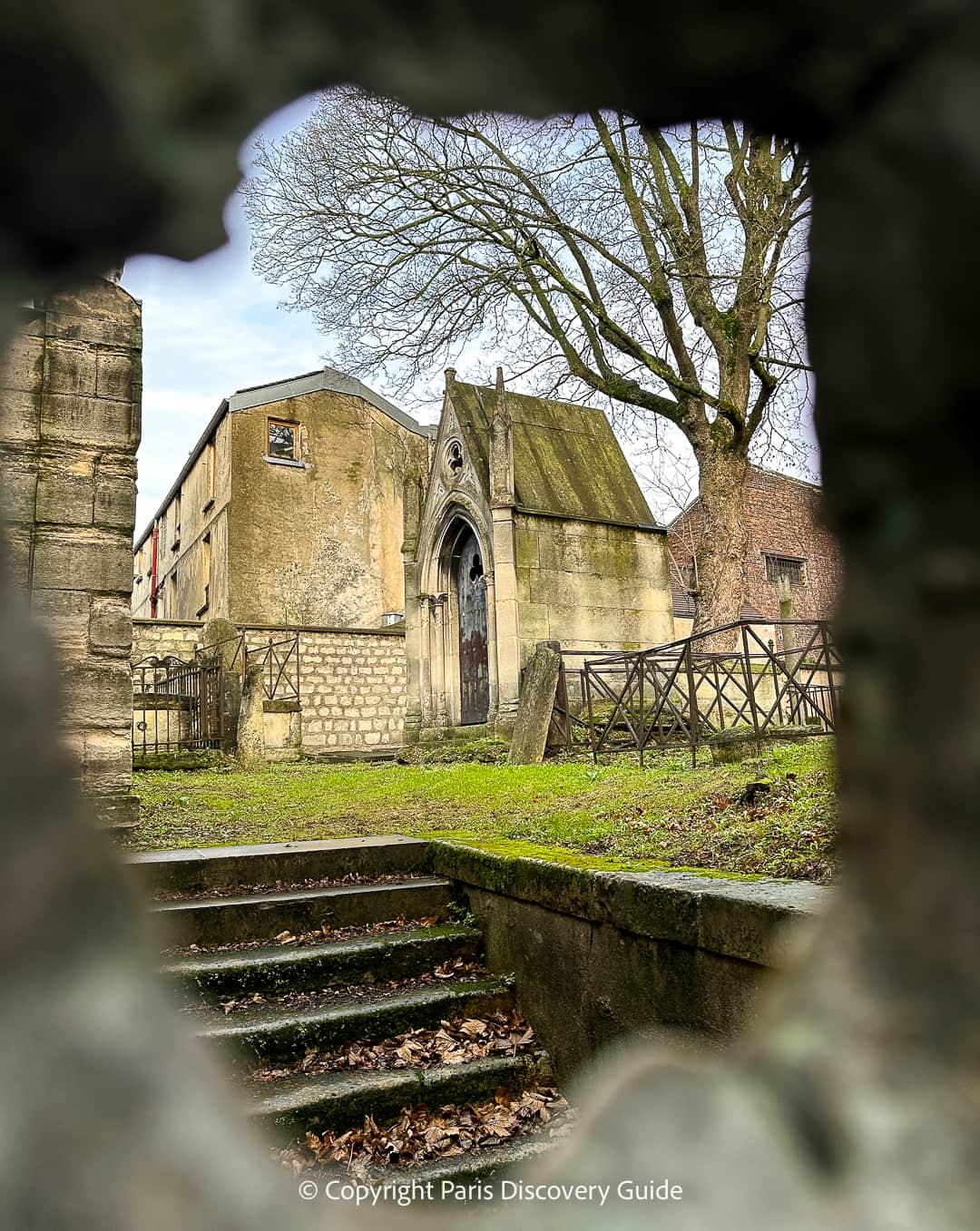
Even on All Saints Day, few people visit Cimetaire du Calvaire and even fewer bring flowers since the people interred here 200+ years ago appear to be mostly forgotten today. It's lovely and picturesque, thanks to its location near Sacre Coeur, but it's basically similar to the graveyards you might see in any Frency country town or village.
Quite honestly, the main reason why you might want to visit the cemetery on All Saints Day is simply because that's the only day when you reliably can get inside the gate.
Otherwise, if you want to visit a historical Paris cemetery to see memorials for La Toussaint, choose one of the others.
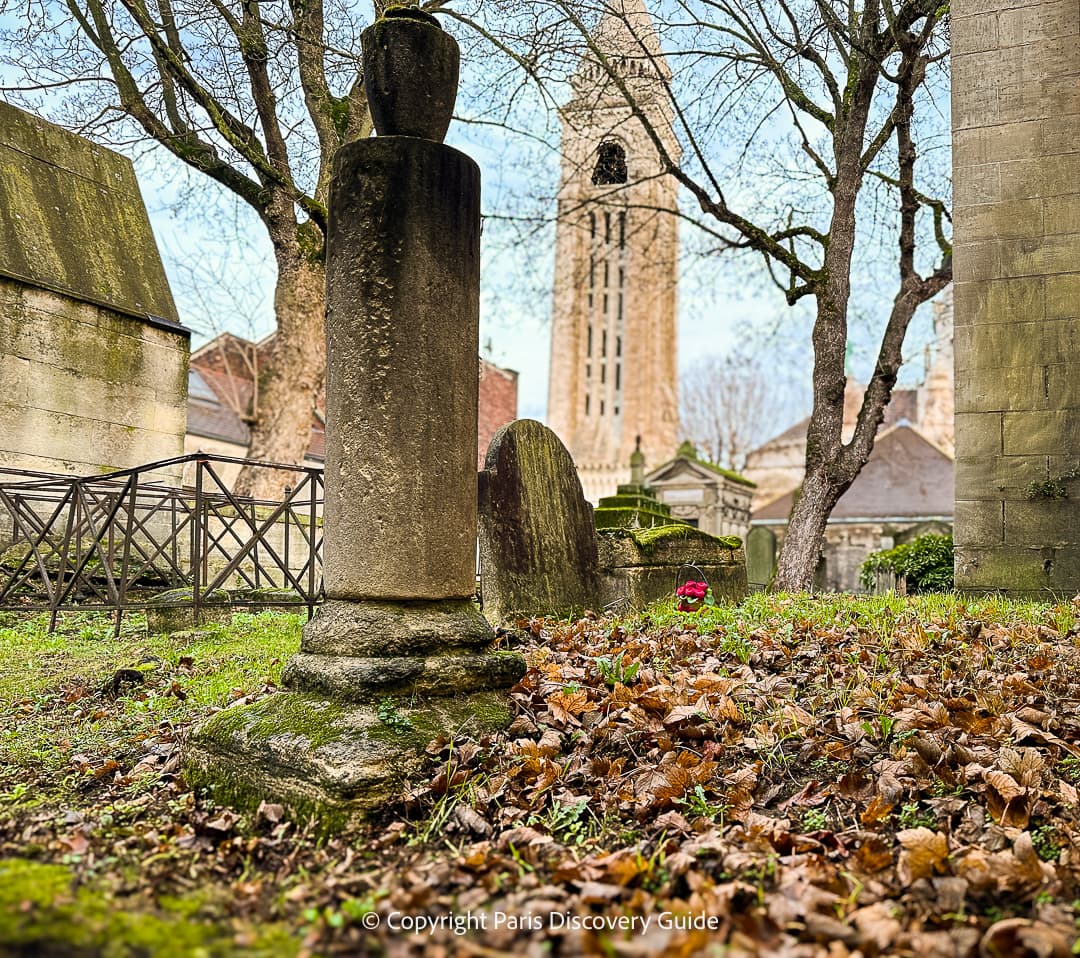
Is Calvary Cemetery the Oldest Graveyard in Paris?
No. Although you may hear Cimetaire du Calvaire called the oldest cemetery still in existence in Paris, that's not actually correct, according to Thomas Jonglez, author of Secret Paris.
The oldest is believed to be the tiny Portuguese Jewish Cemetery opened in 1780 by a Sephardic Jewish community originating in Portugal. Burials continued until 1810 when Napoleon opened all cemeteries to everyone, regardless of religion.
The cemetery (44 Avenue de Flandre, 19th arr) is now hidden by a building and open only by appointment through the Consistoire Israelite de France.
Directions to Cimetaire du Calvaire
Location: 2 Rue du Mont-Cenis, 18th arrondissement (next to Saint-Pierre Church)
Metro: Abbesses (take the funicular (a 3-minute walk from the station) up the hill; as you face Sacre Coeur Basilica, the church and cemetery are to your left
Another All Saints Day Activity: Visit Paris's "Empire of the Dead"
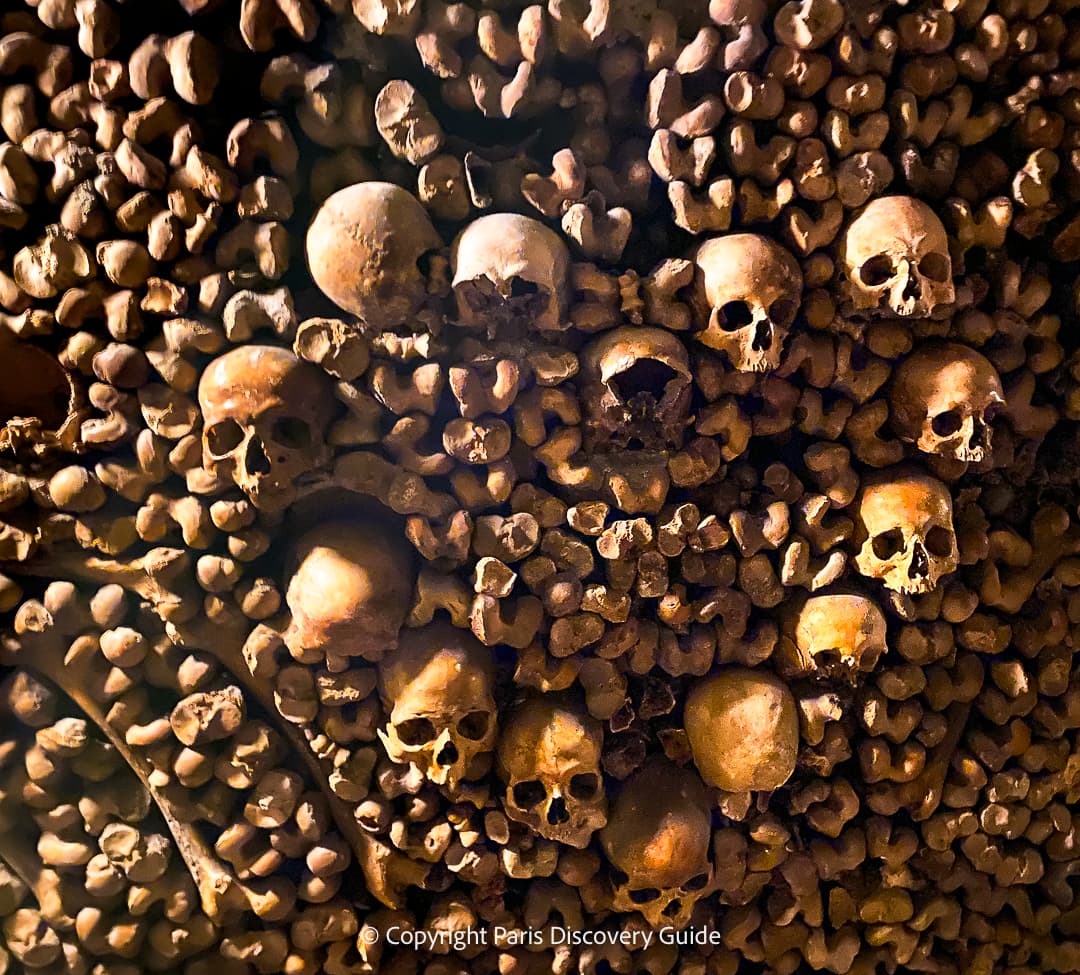
For a fascinating excursion into the nether-world, plan an All Saints' Day visit into the Catacombs of Paris, the vast network of underground quarry tunnels that Paris transformed into the world's largest ossuary after its overcrowded older cemeteries started overflowing with decomposing bodies and (literally) bursting at the seams during the late 1700s. We'll spare you the details.
Although a visit to the "Empire of the Dead" is not a traditional All Saints Day excursion, don't assume the Catacombs will be less crowded than usual - in fact, with the Toussaint school holidays in full swing, tickets may be somewhat harder to book than normal, so don't wait until the last minute to get yours!
Where to Attend an All Saint's Day Mass in Paris: Another Toussaint Tradition
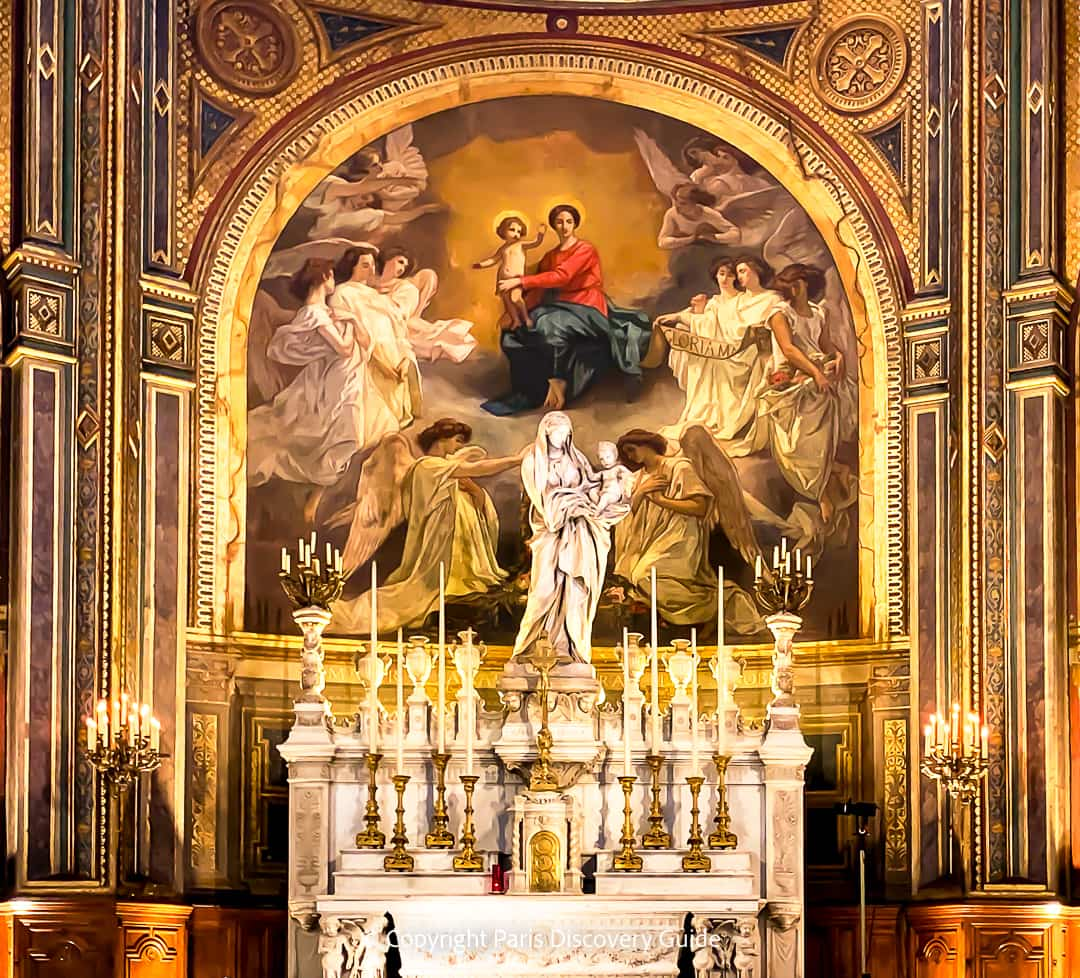
Most Roman Catholic and Orthodox and some Anglican/Episcopal churches in Paris conduct special masses and worship services on November 1, All Saints' Day.
St Joseph's Catholic Church (50 Avenue Hoche, 8th arr, Metro: Étoile) is the only English-speaking Roman Catholic church in Paris. Check their website for information.
You might also consider attending a Toussaint mass at one of Paris's magnificent historical Catholic churches. Check their websites to confirm times:
- Eglise Saint Eustasche - 146 Rue Rambuteau, 1st arrondissement, Metro: Les Halles; website
- Eglise Saint Sulpice - 2 Rue Palatine; 6th arr; Metro: Saint Sulpice; website
- Eglise Severin - 1 Rue des Pretres-Saint-Severin, 5th arr; Metro: Cluny-La Sorbonne, Saint-Michel Notre Dame; website
- Eglise Etienne du Mont - Place Sainte-Geneviève (behind the Pantheon), 30 Rue Decartes, 5th arrondissement, Metro: Maubert Mutualité; website
- Sacre Coeur Basilica - 35 Rue du Chevalier de la Barre, 18th arr, Metro: Abbesses or Anvers; take the Funicular up the hill; website
- Église de la Madeleine - Place de la Madeleine, 8th arrondissement, Metro: Madeleine; website
- Notre Dame Cathedral - 6 parvis Notre-Dame, 4th arrondissement, Metro: Cité; website
Episcopal and Anglican Paris churches to check for possible All Saints/All Souls Day services (even though Toussaint is a technically a Catholic holiday, it's also a cultural tradition so a couple sometimes hold special remembrance services):
- American Cathedral - Episcopal; 23 Avenue George V, 8th arr, Metro: Alma Marceau - Website
- St Michael's Church - Anglican; 5 rue d'Aguesseau, 8th arr; Metro: Madeleine) - Website
- St George's Anglican Church - 7 Rue Auguste Vacquerie, 16th arr: Metro: Kléber, George V; Services mostly in English - Website
More about Paris in November
Where to Celebrate Dia de los Muertos on All Saints Day in Paris
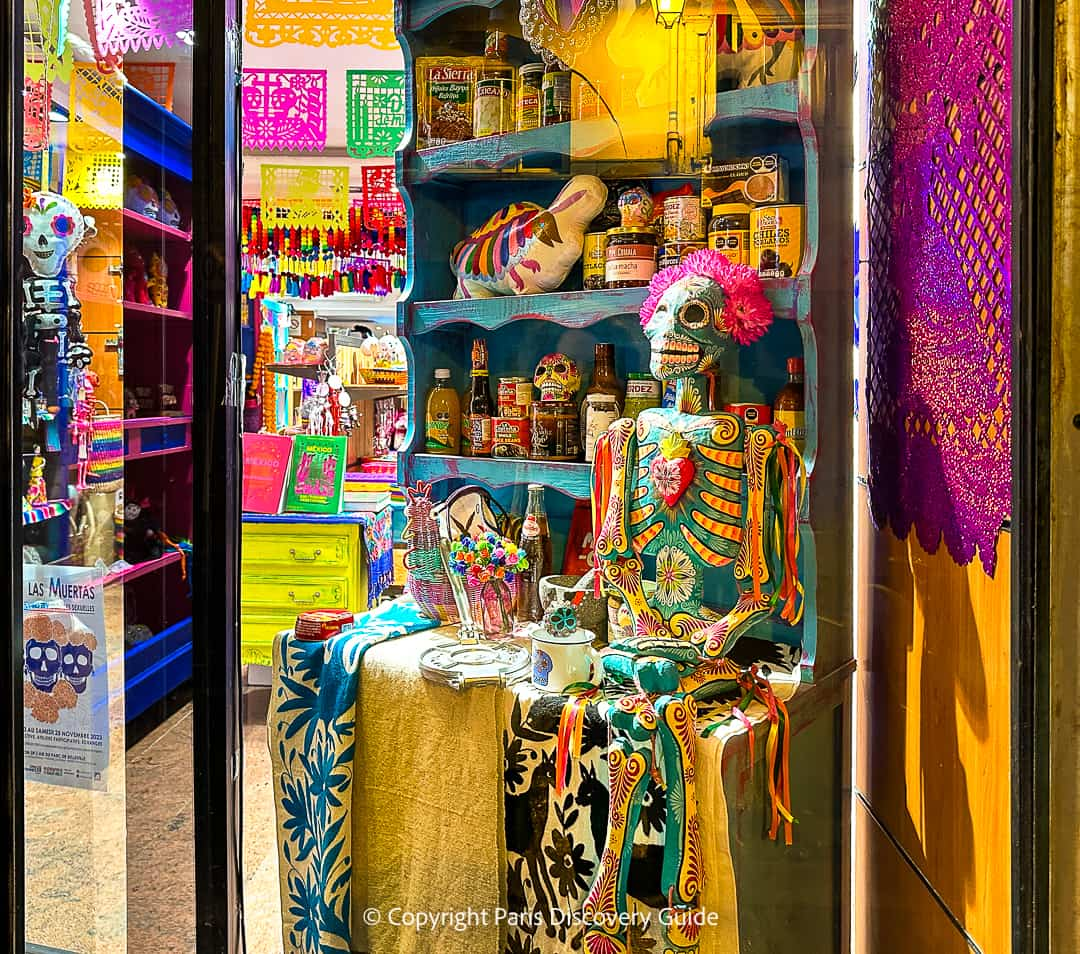
Although Dia de los Muertos celebrations in Paris tend to be small and family-based, the Institut Culturel du Mexique (Mexican Cultural Center) in the Marais showcases Mexican culture year-round and usually organizes a Dia de los Muertos celebration or exhibition. Check their website around early-to-mid October to see what's on this year.
The Fête des Morts à Paris (Paris Festival of the Dead) is another series of celebrations that you might want to check out. The festivities take place for an almost 2-week period from the last weekk in October through early November in various locations around the city. The best source of information is the festival's website.
For kid-friendly festivities, head to Jardin d'Acclimatation, the popular amusement park in the 16th arrondissement next to Fondation Louis Vuitton, for their special Toussaint-themed Mexican-style festival: "Dia de los Muertos" - the Day of the Dead.
The festival usually runs for about five weeks from early October into the second week in November - check their website for details.
Expect parades, dancers, mariachis, and fire-eating artists, plus a few ghosts and skeletons thrown in for good measure.
Get your admission ticket plus free rides
Location: Bois de Boulogne, 16th arrondissement; Metro: Les Sablons (3-block walk to the garden)
What Else To Do on Toussaint
Admire Paris's Most Beautiful Fall Foliage
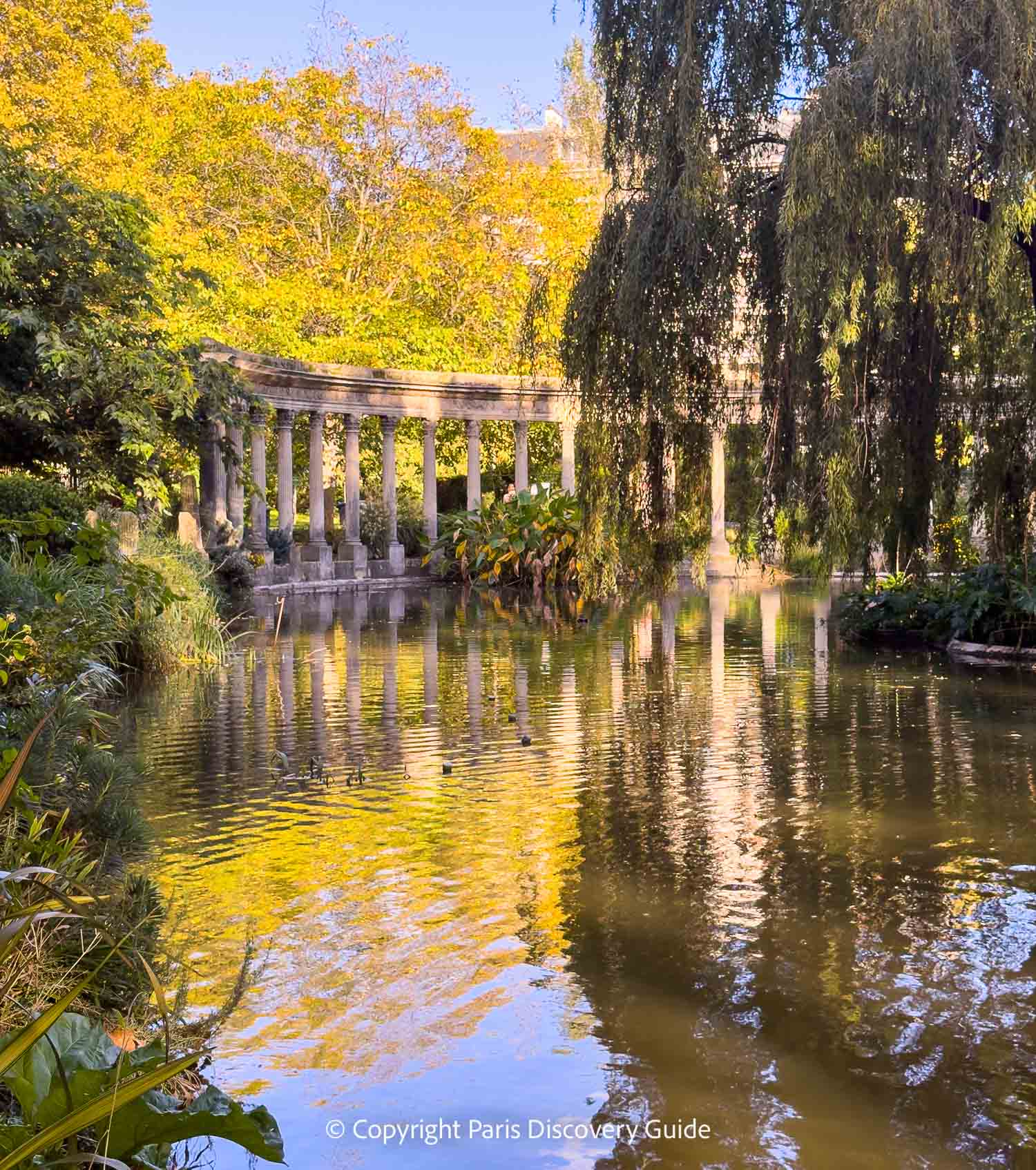
Paris's gold and crimson fall foliage begins to peak around All Saints Day on November 1, and continues to turn golden and crimson throughout the month, especially in the city's parks, cemeteries, and along the banks of the Seine River.
Find the best places to see autumn colors in Paris


